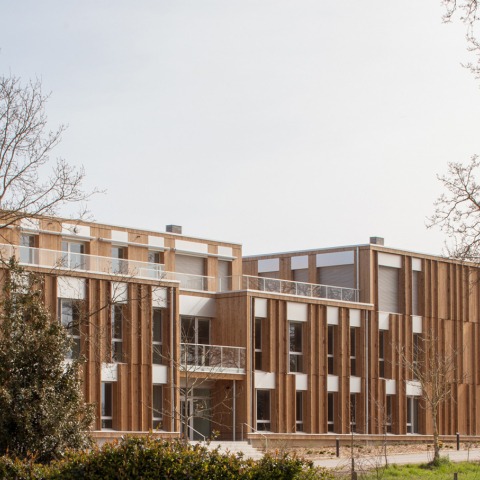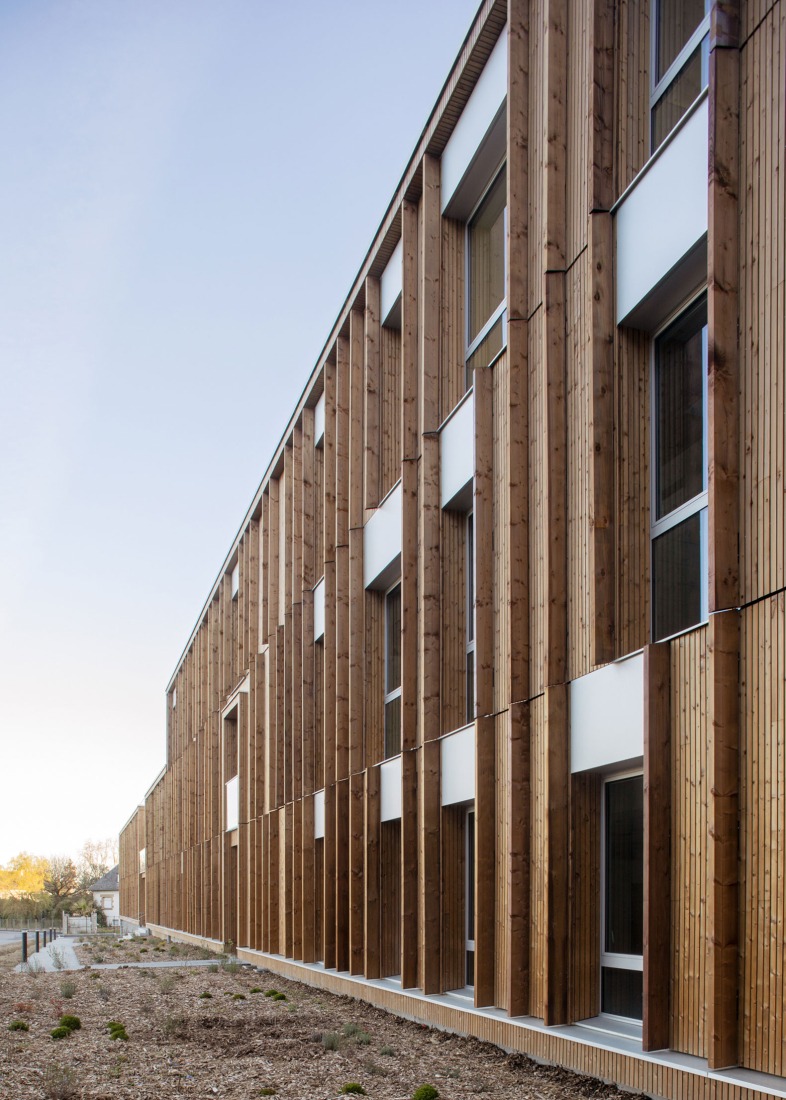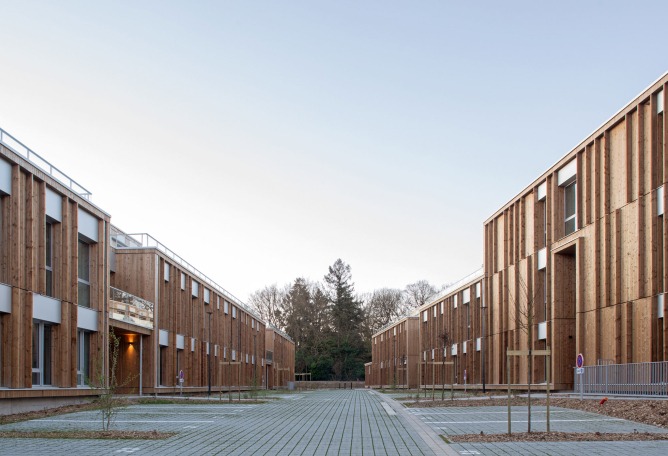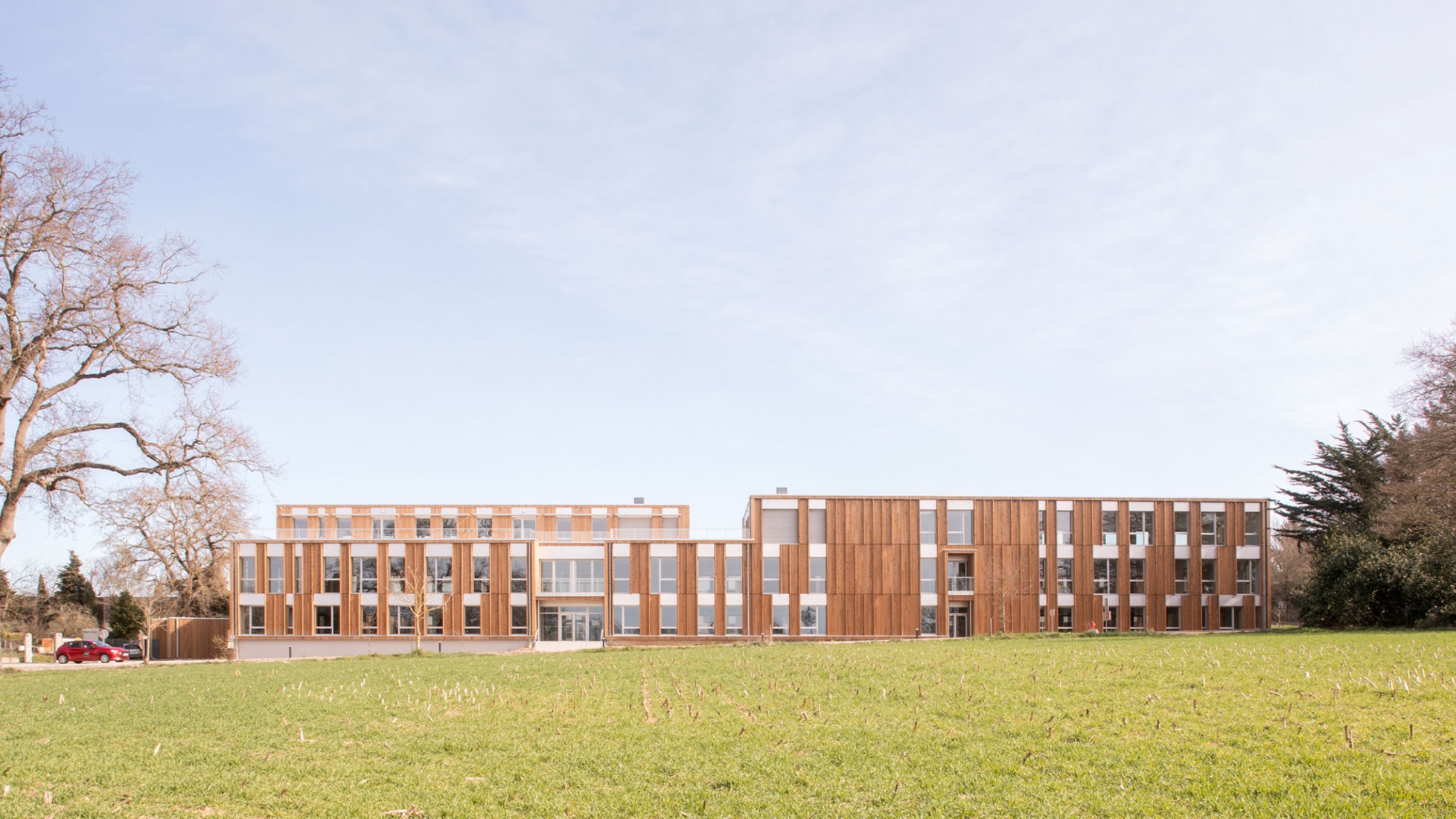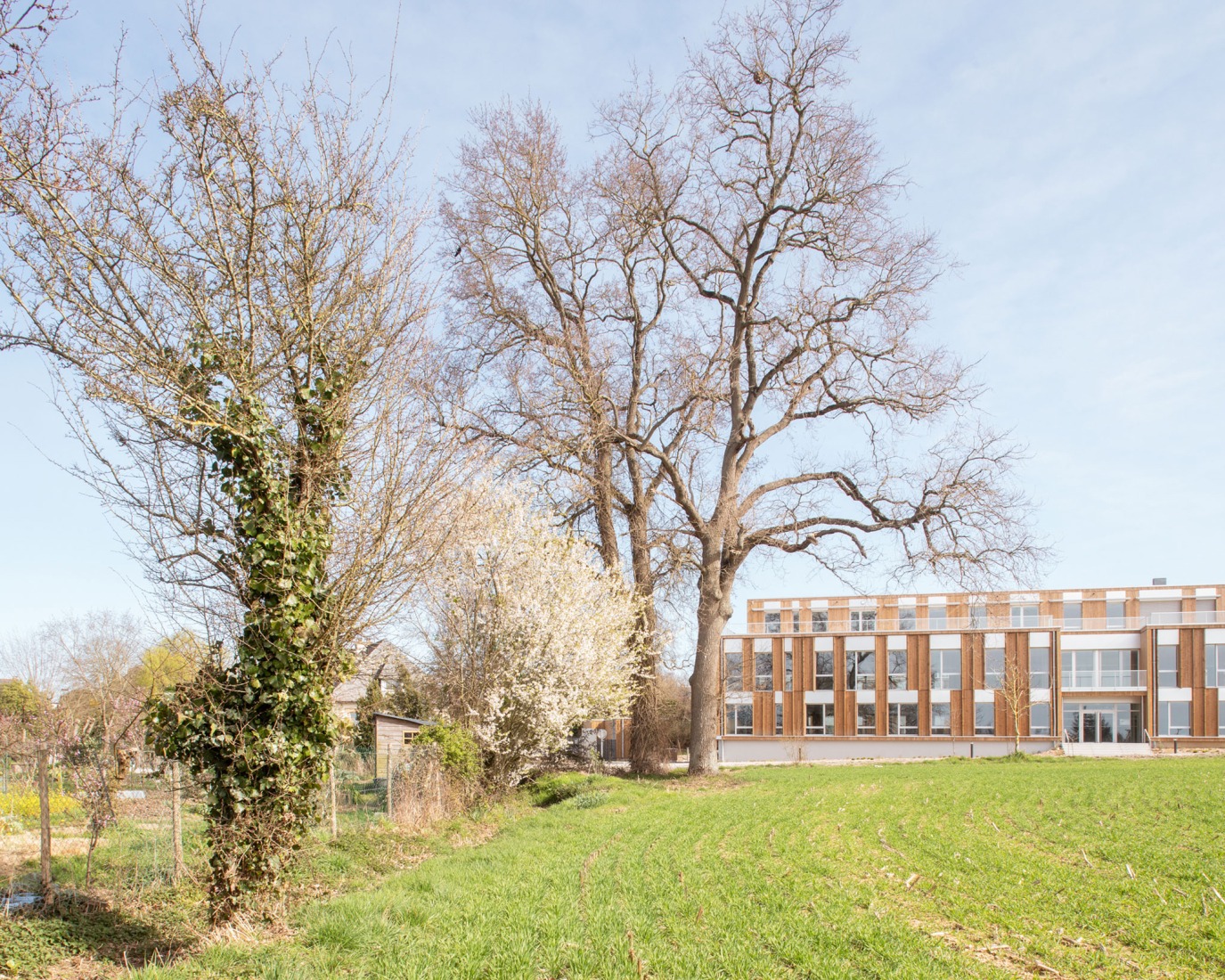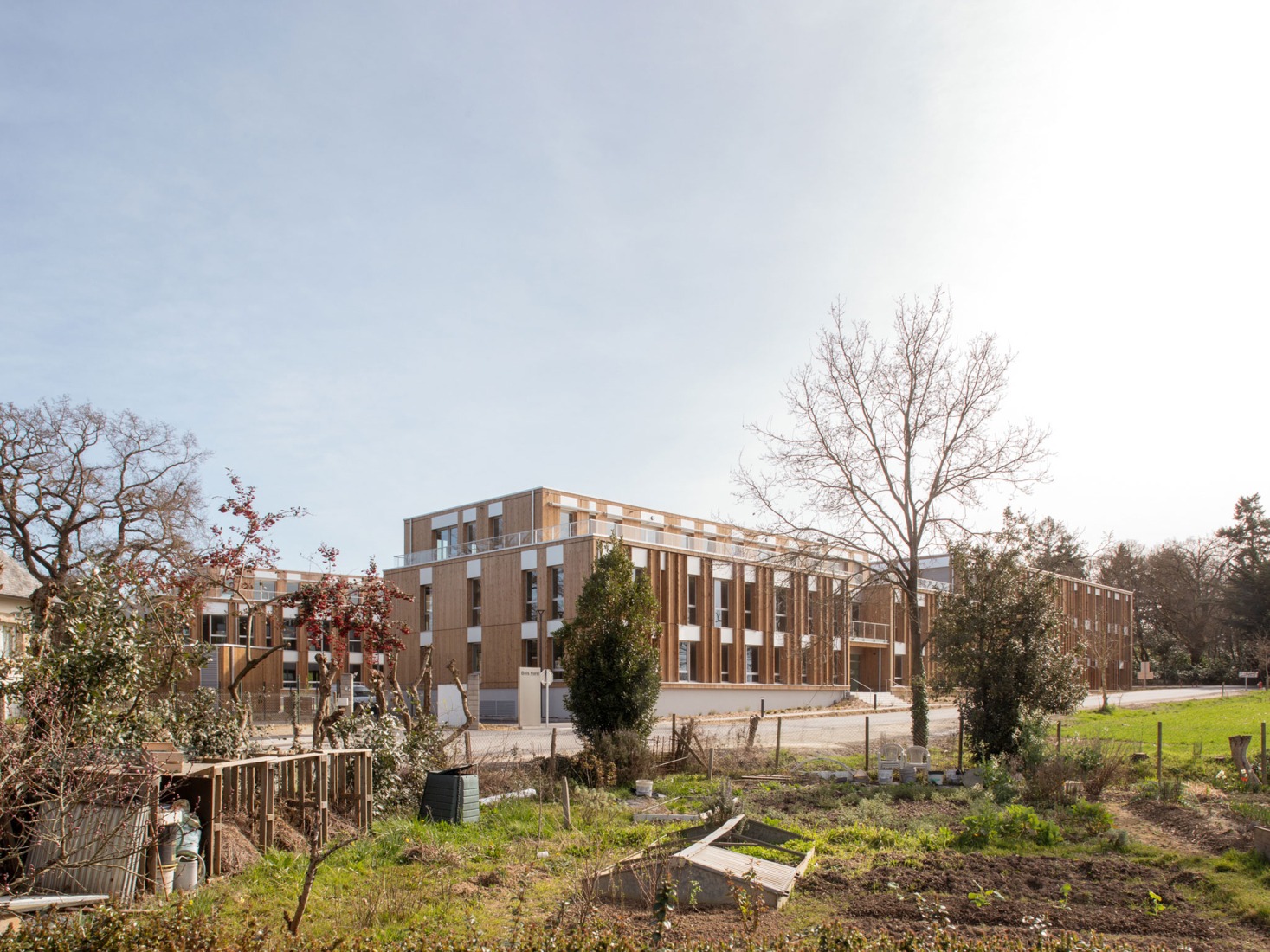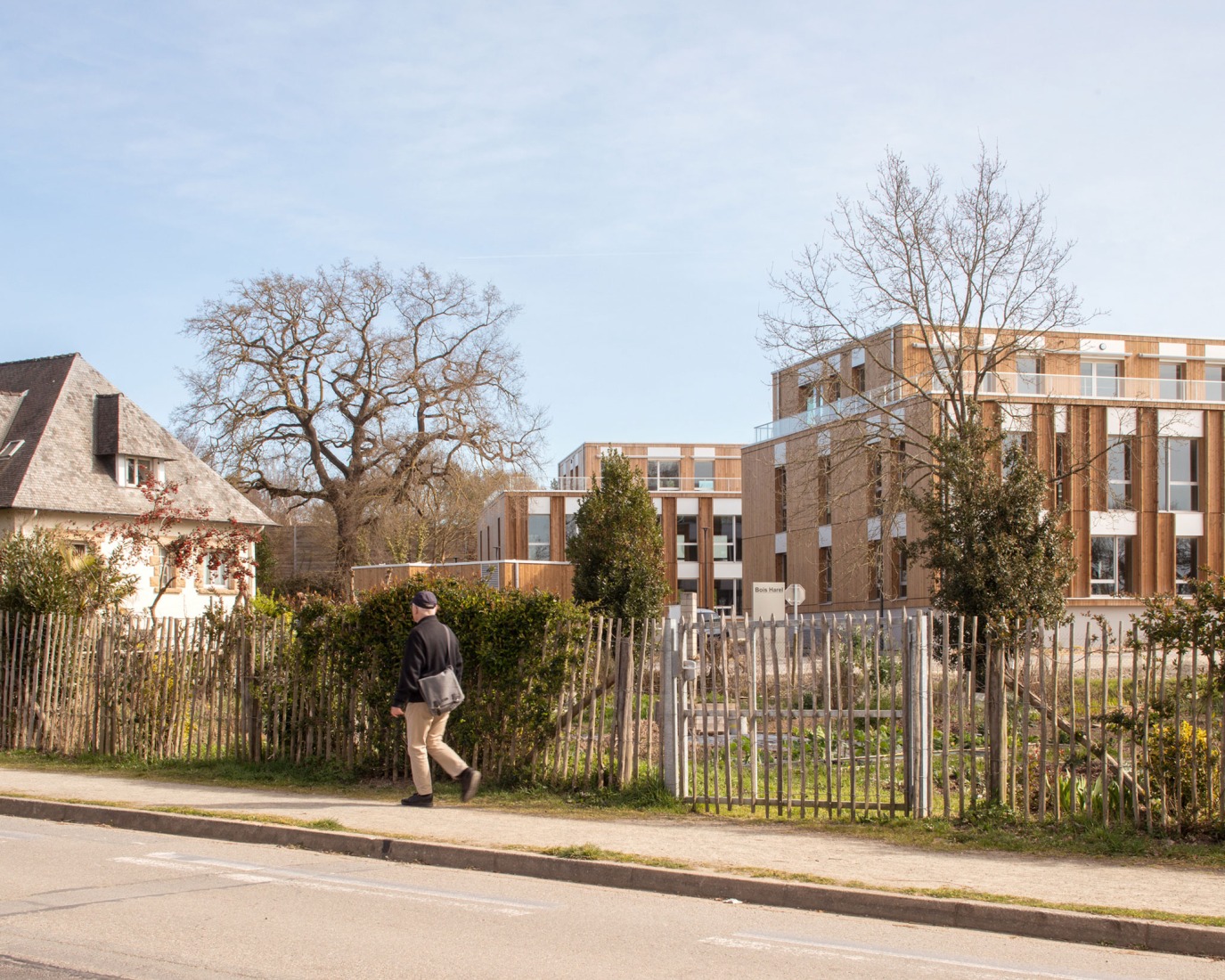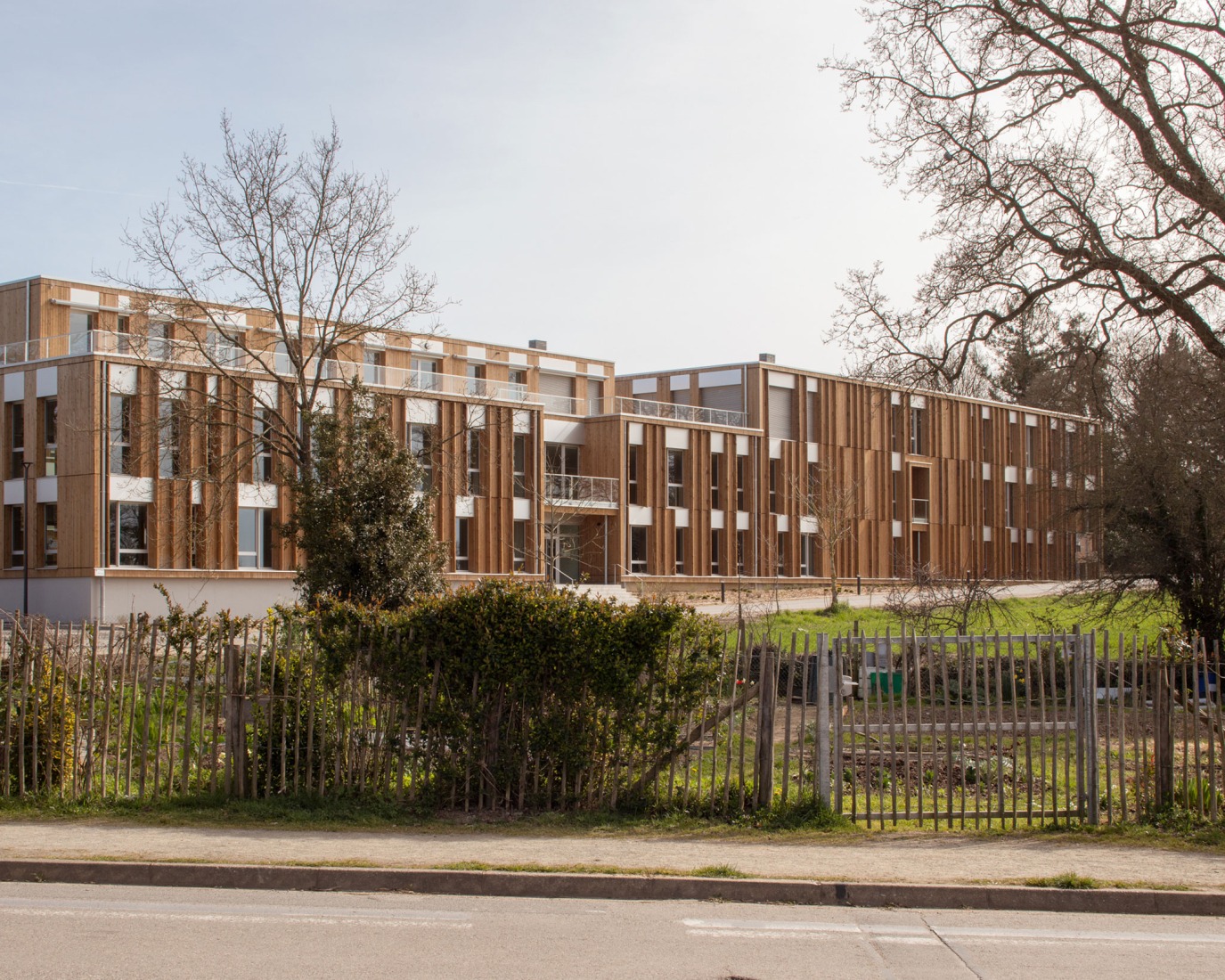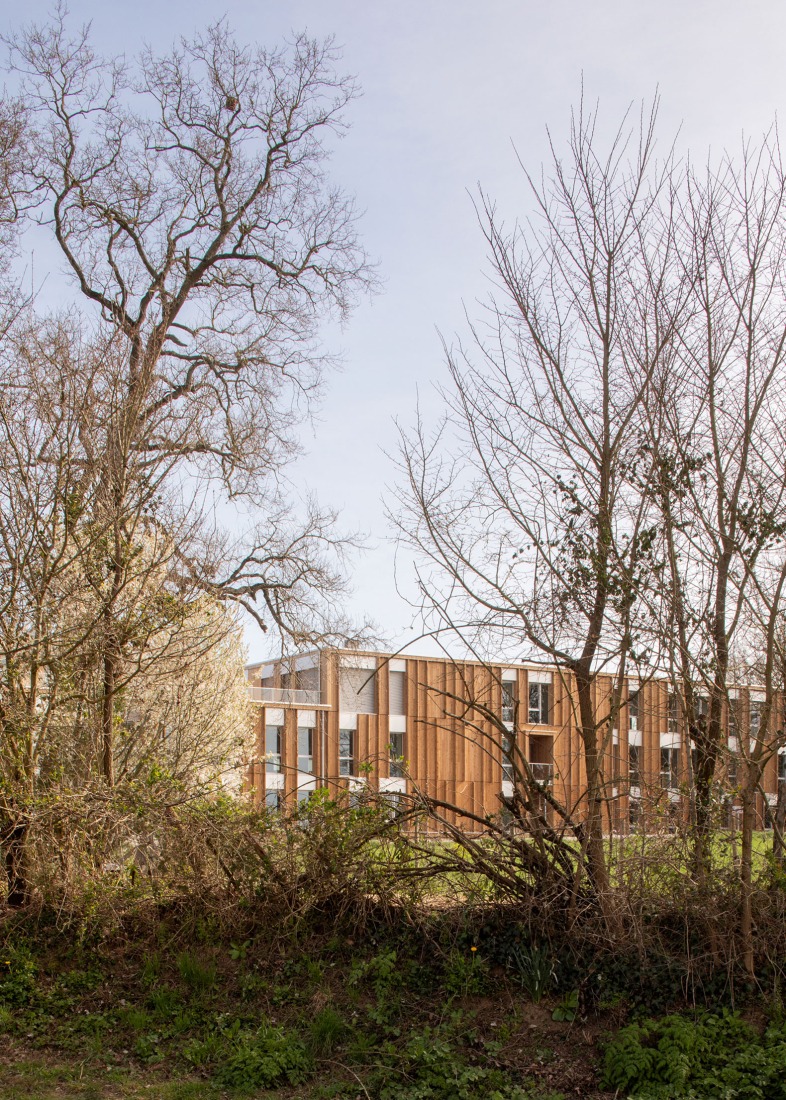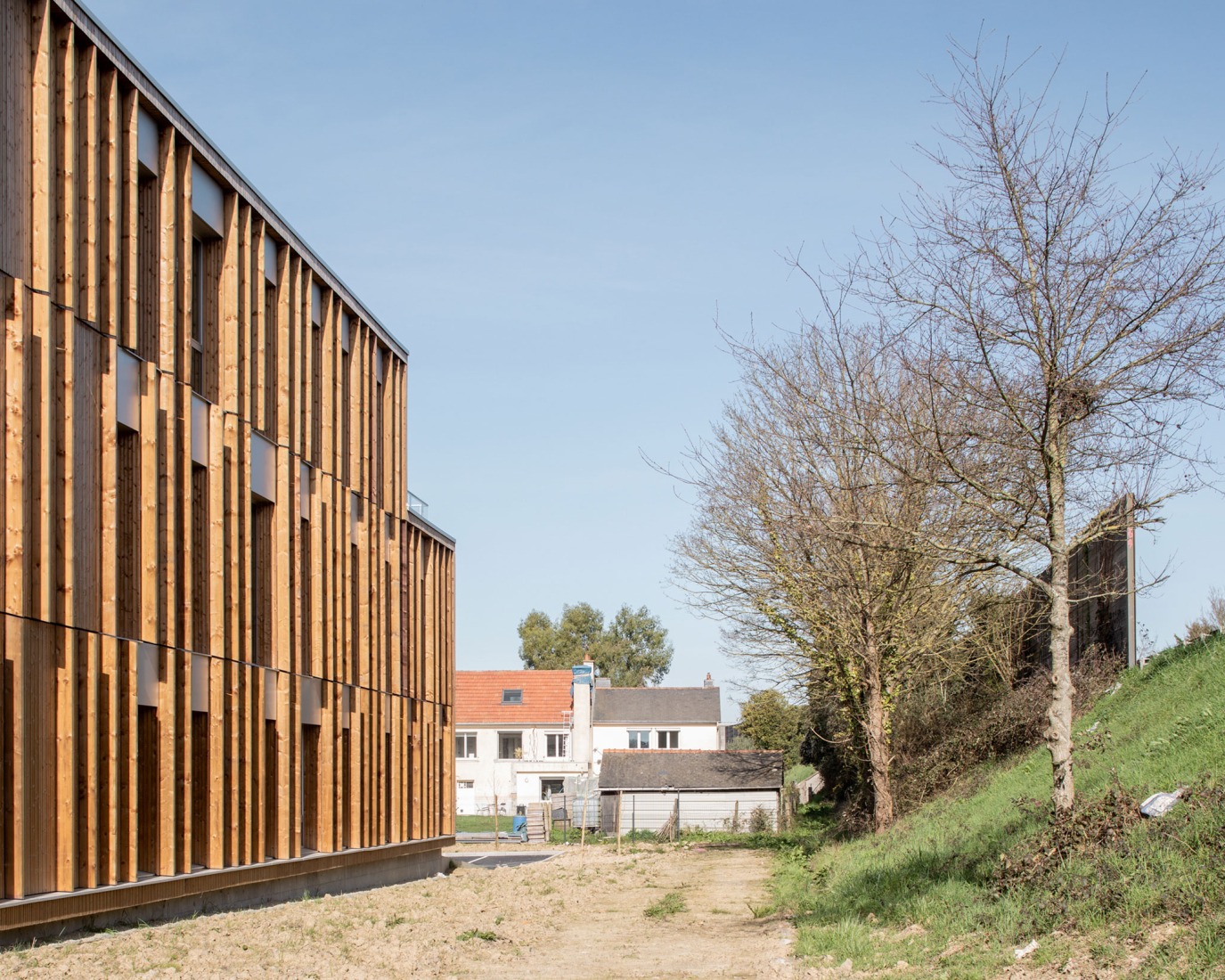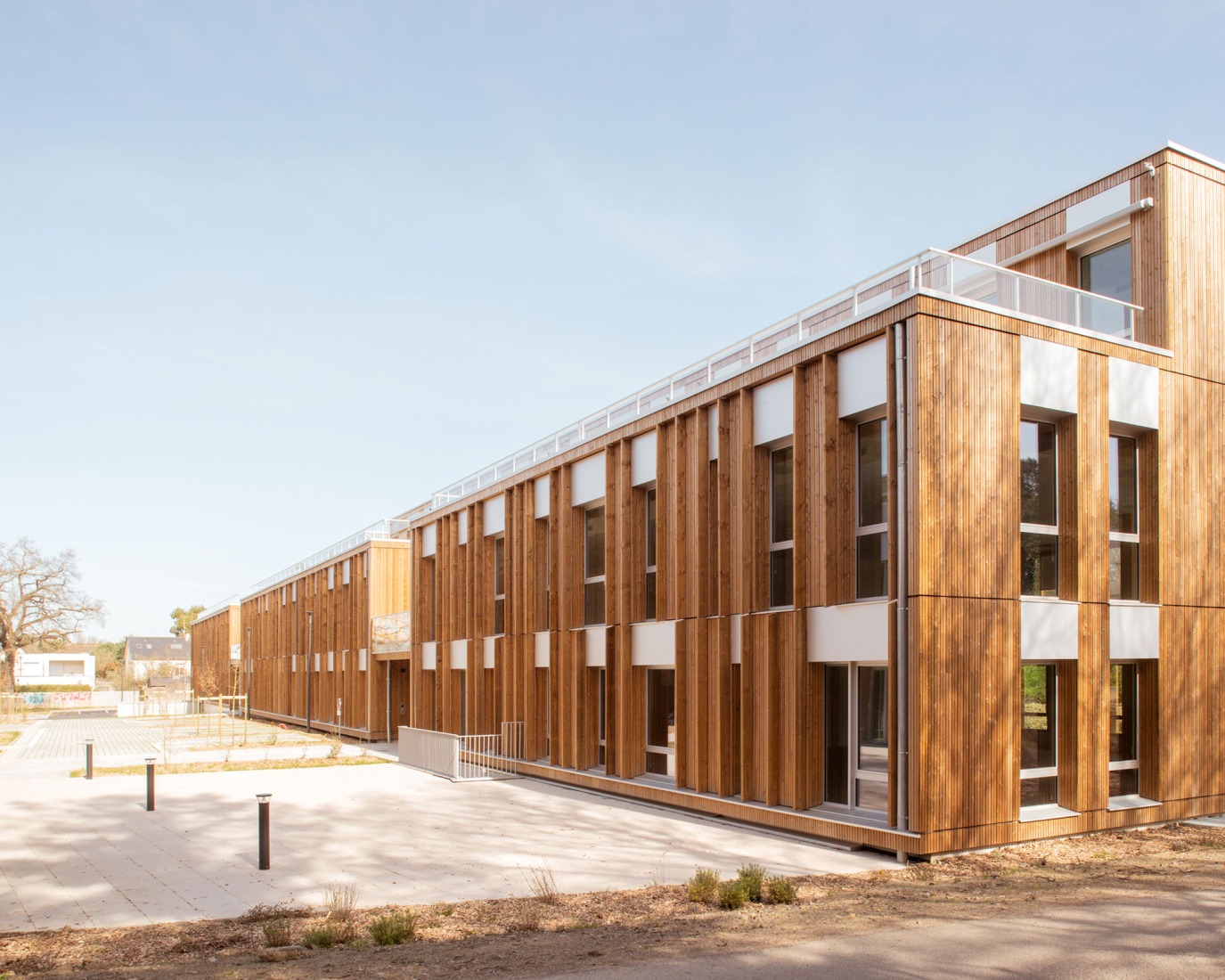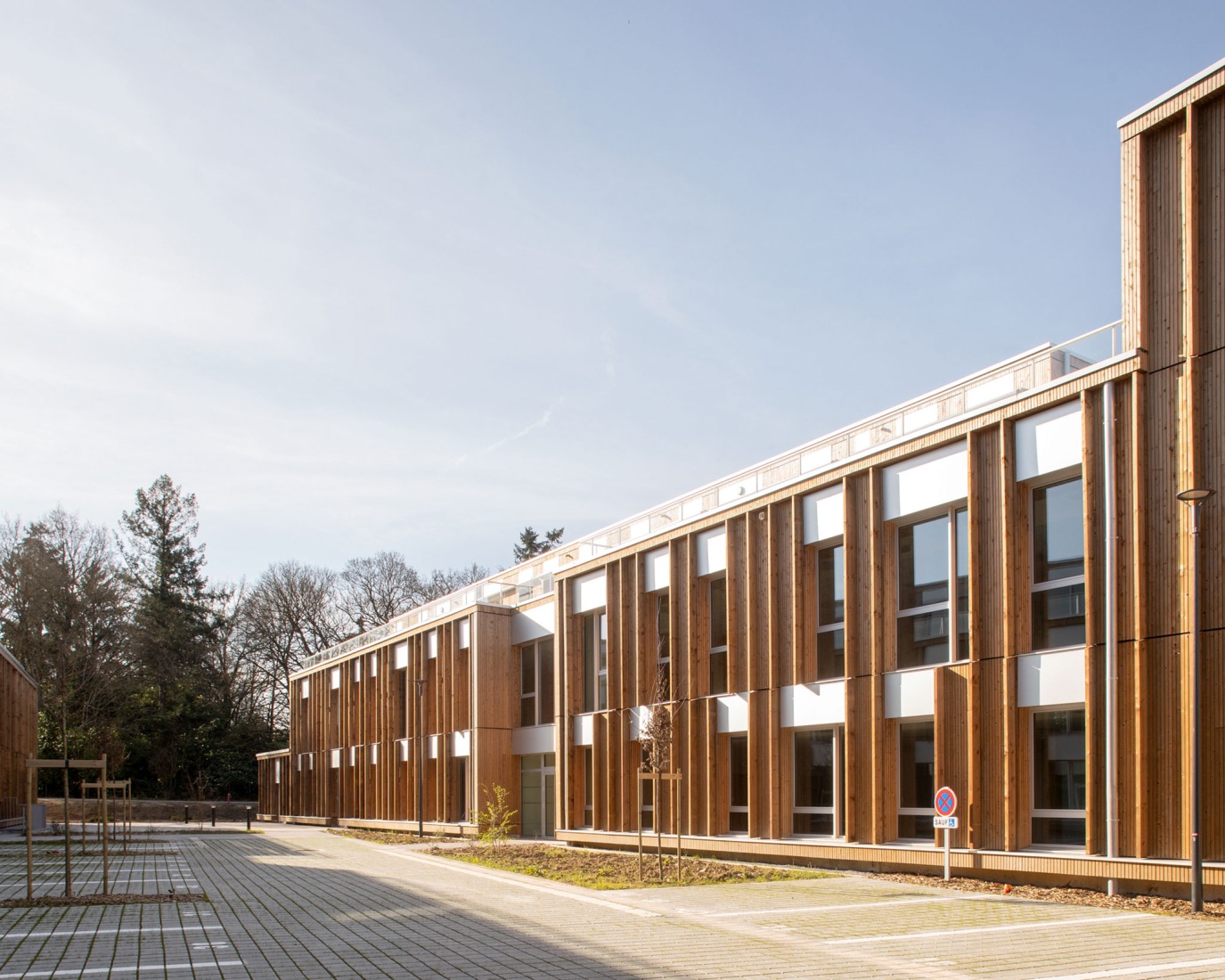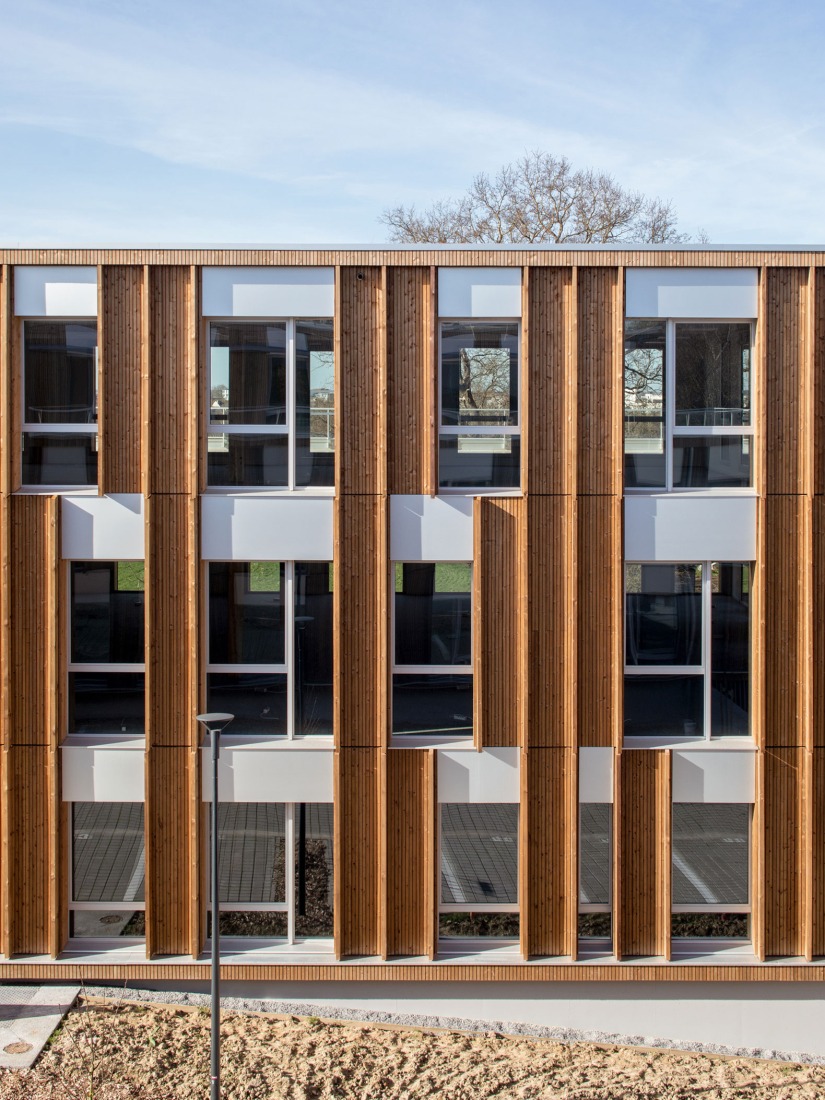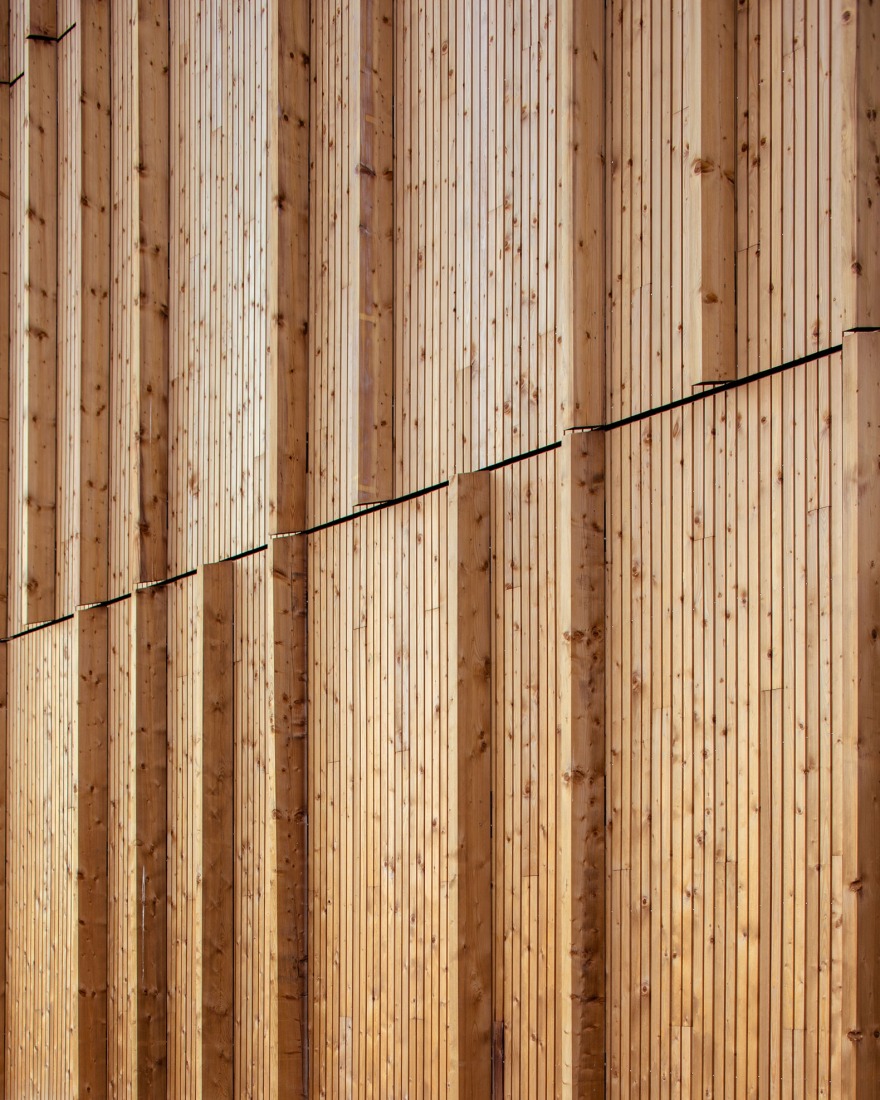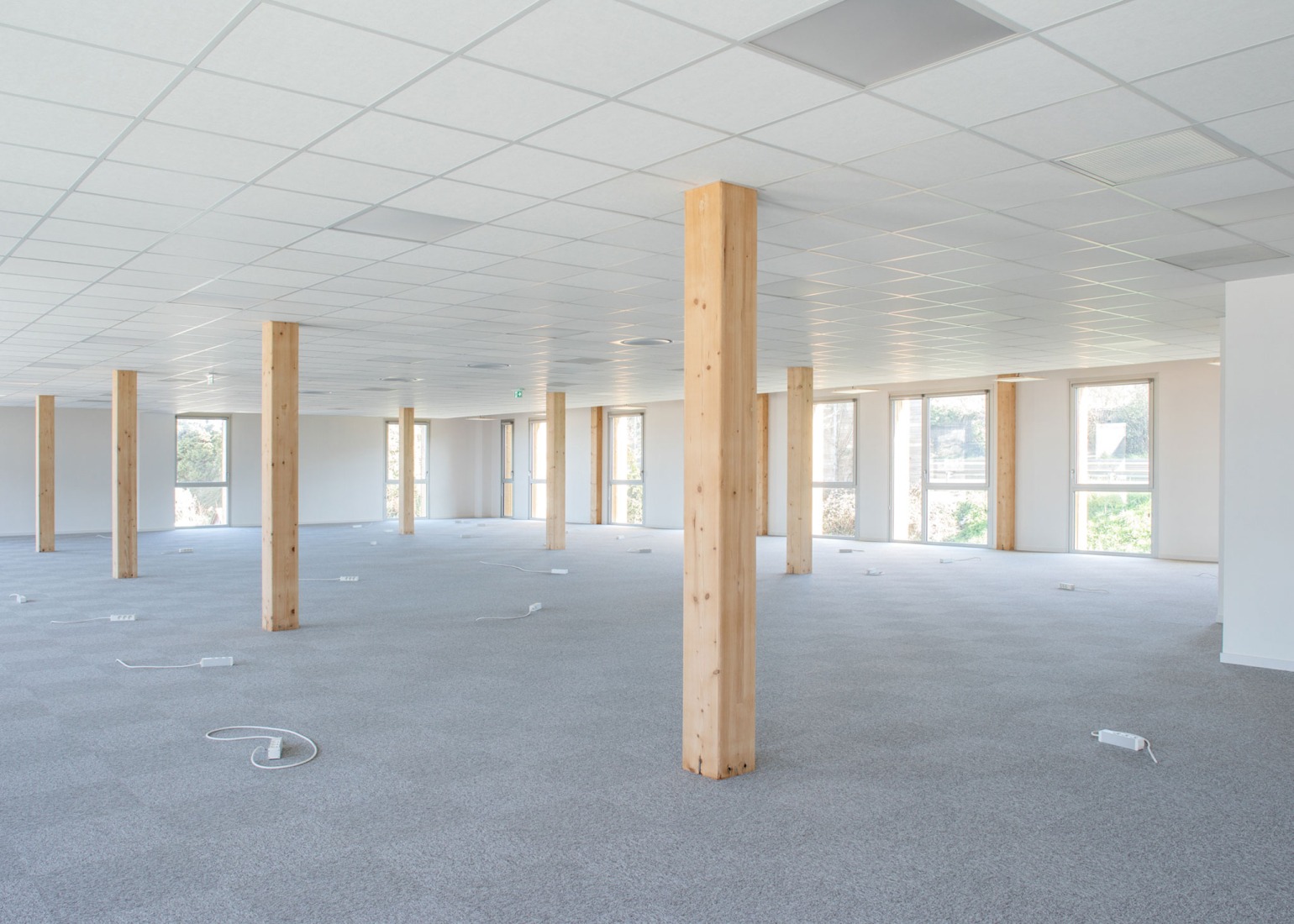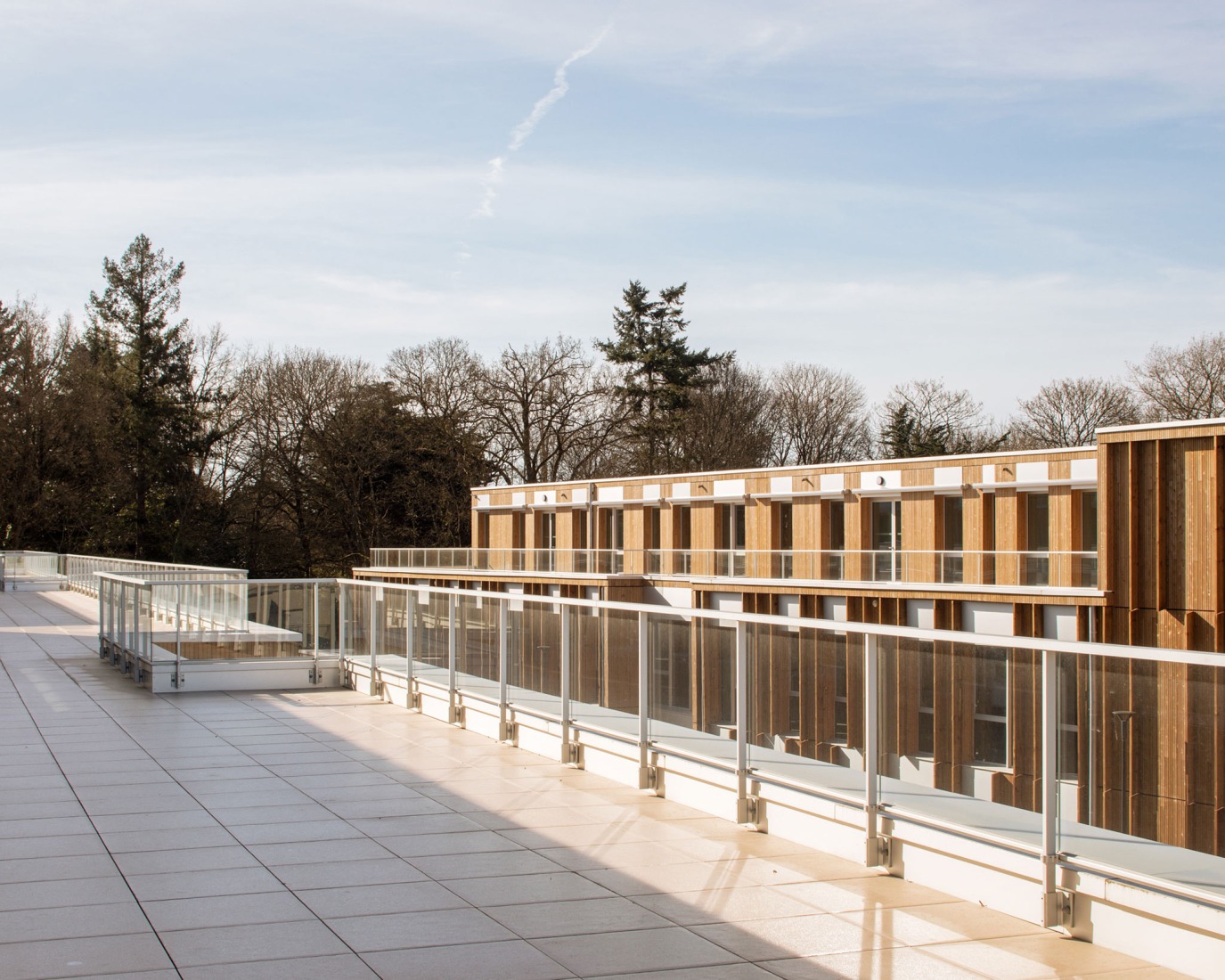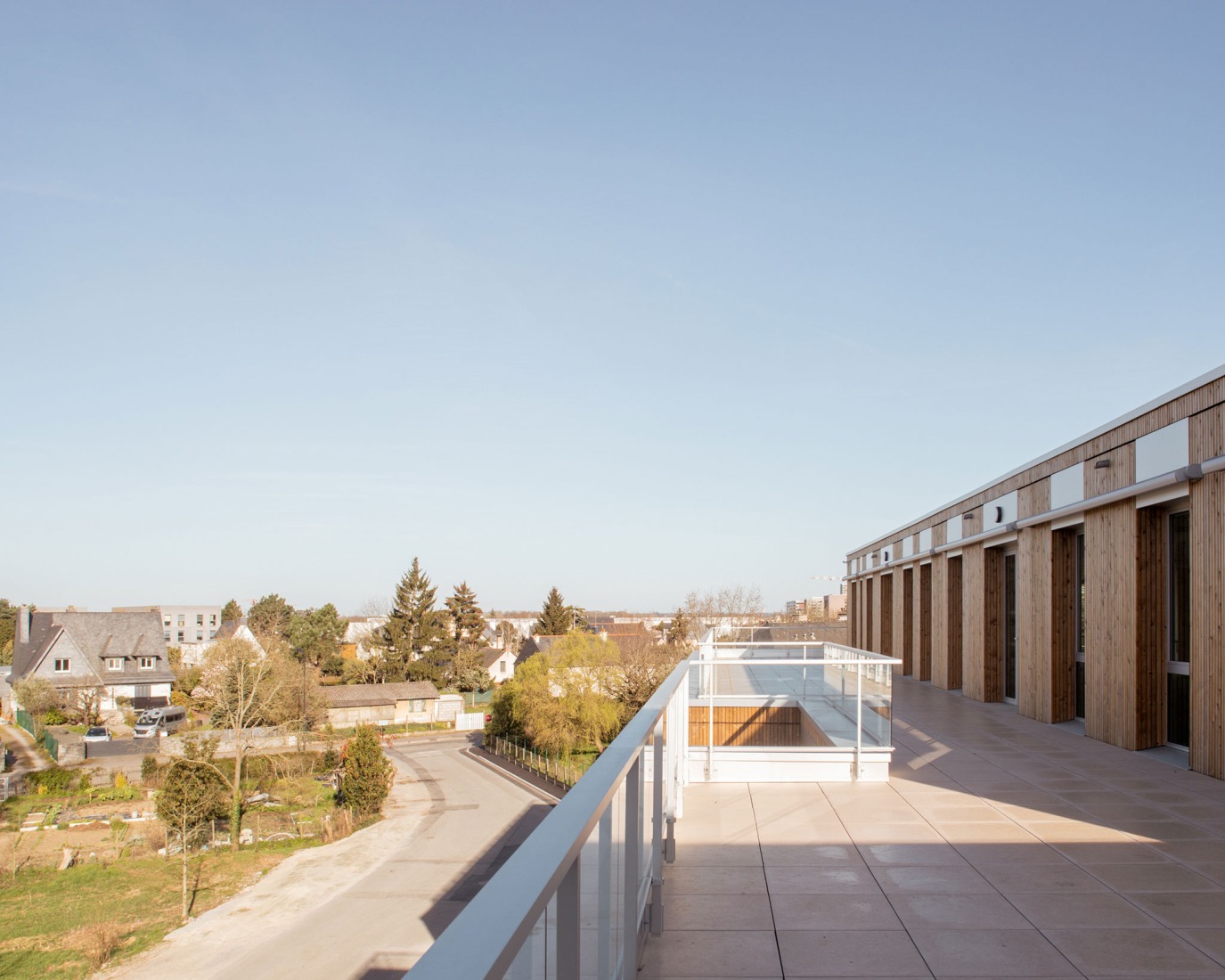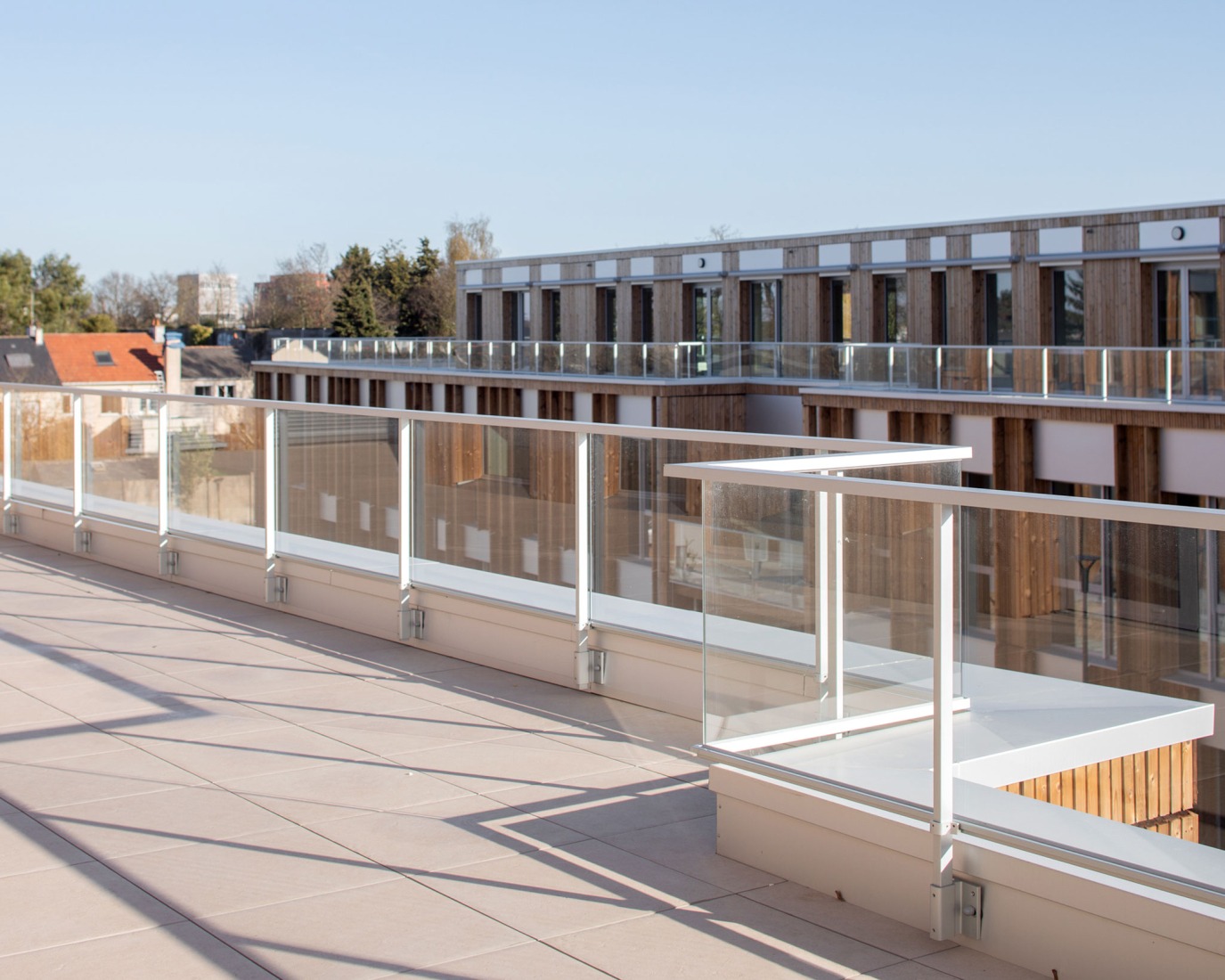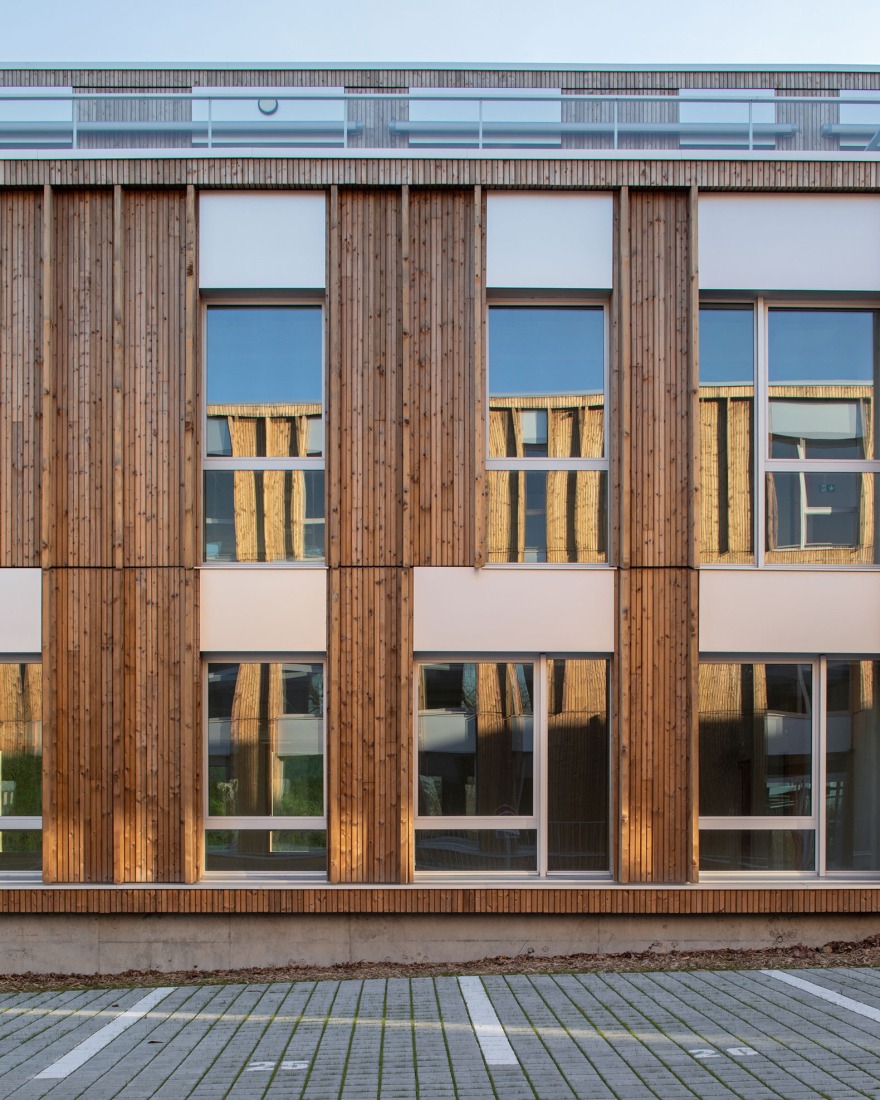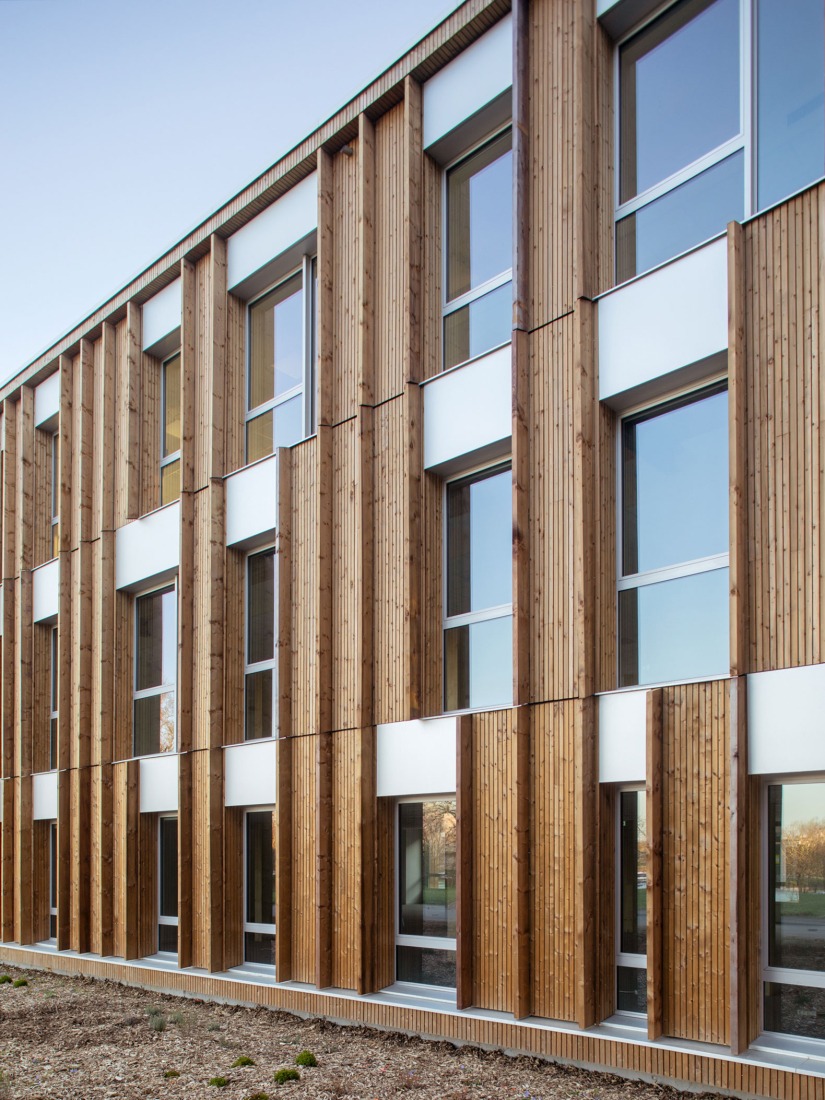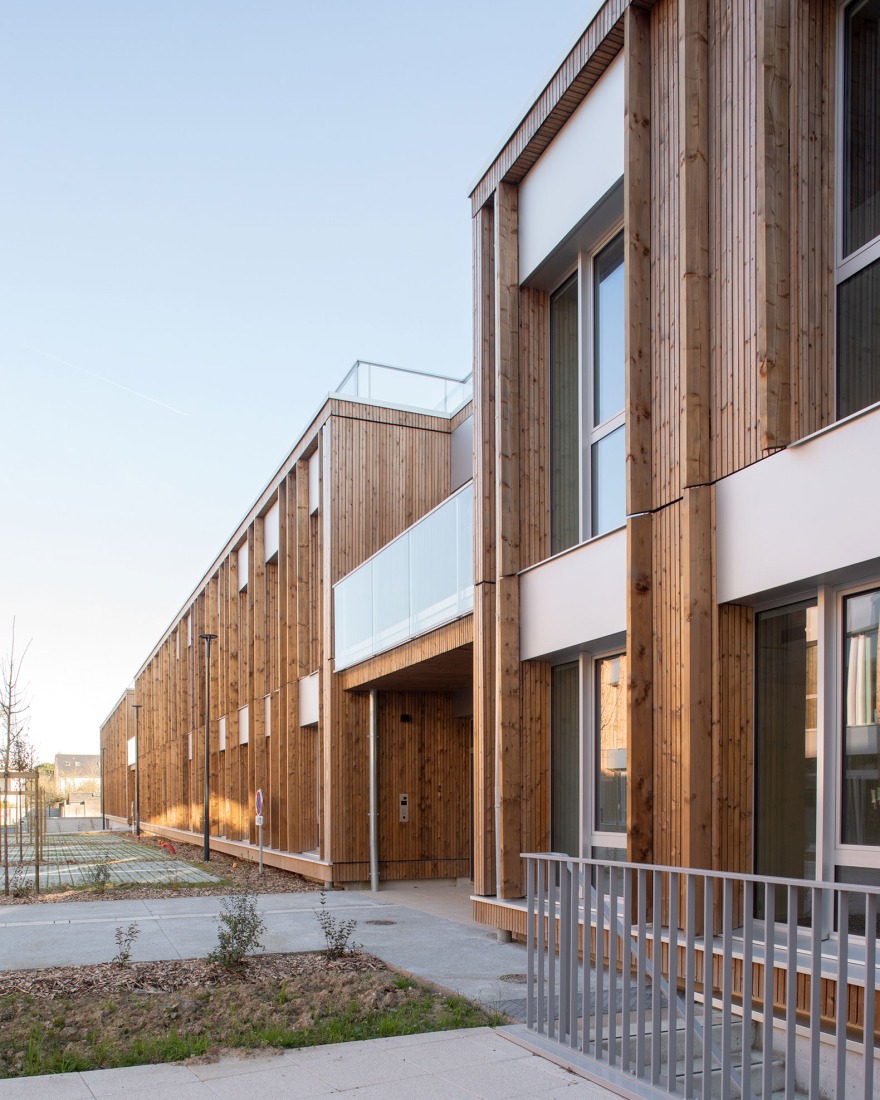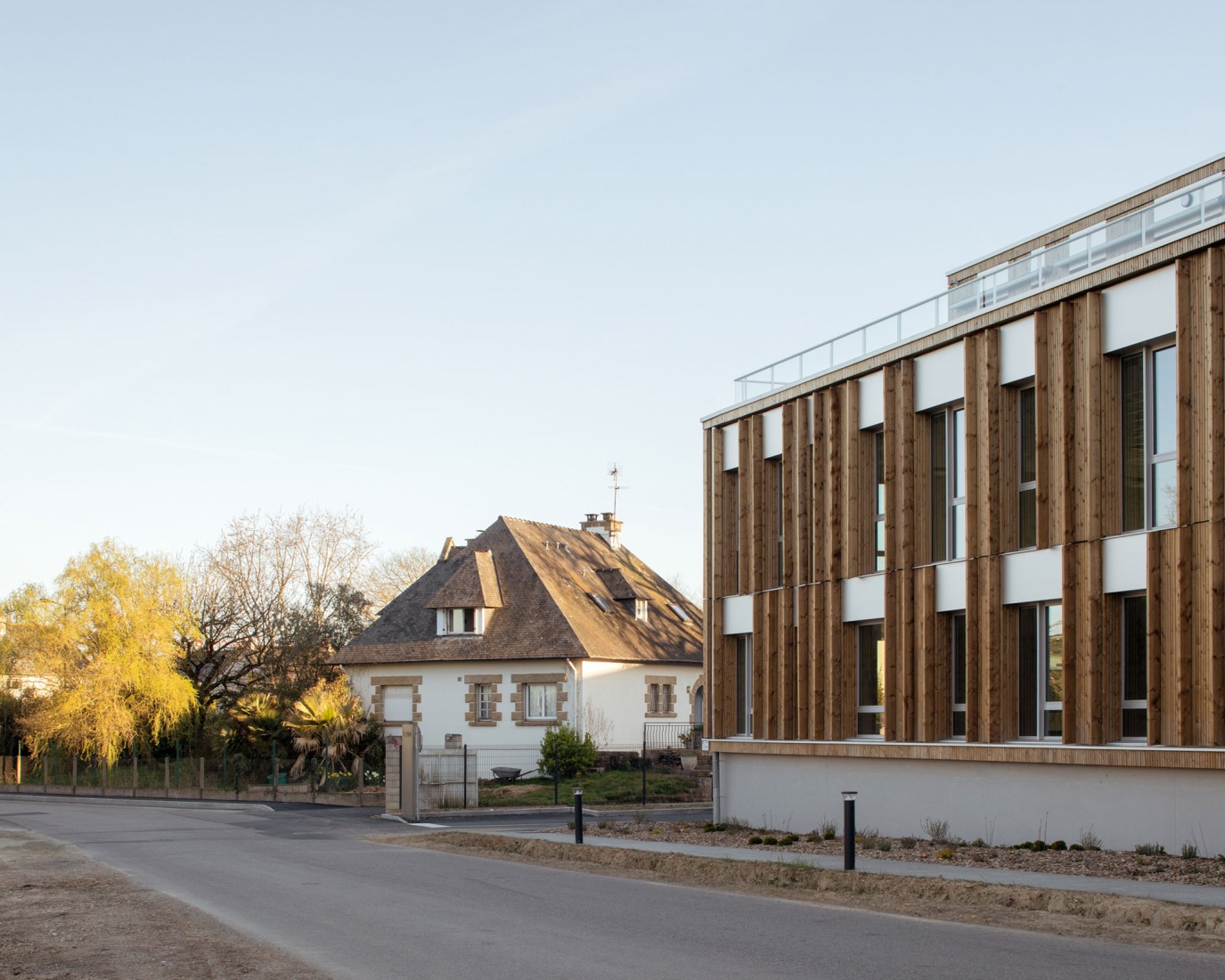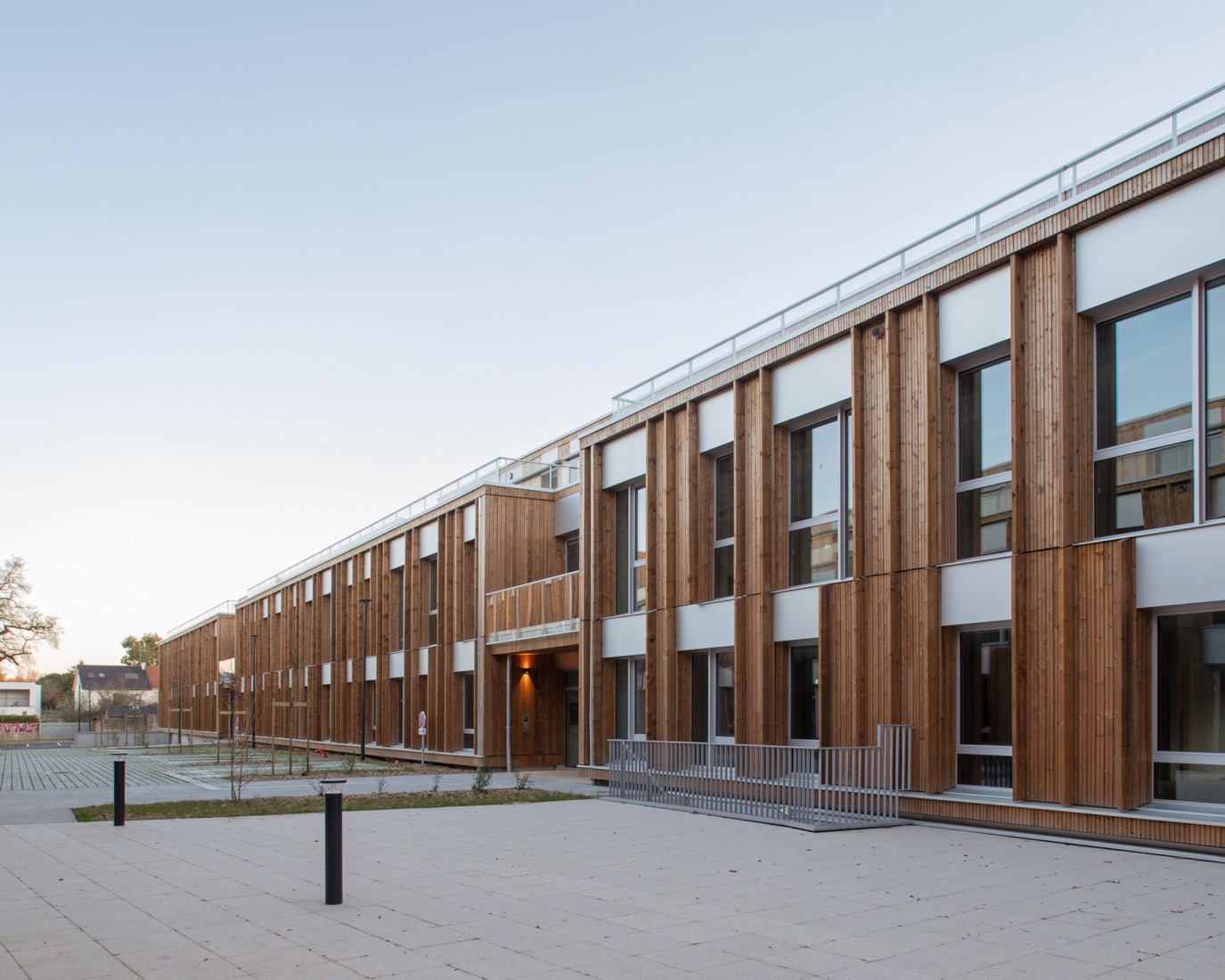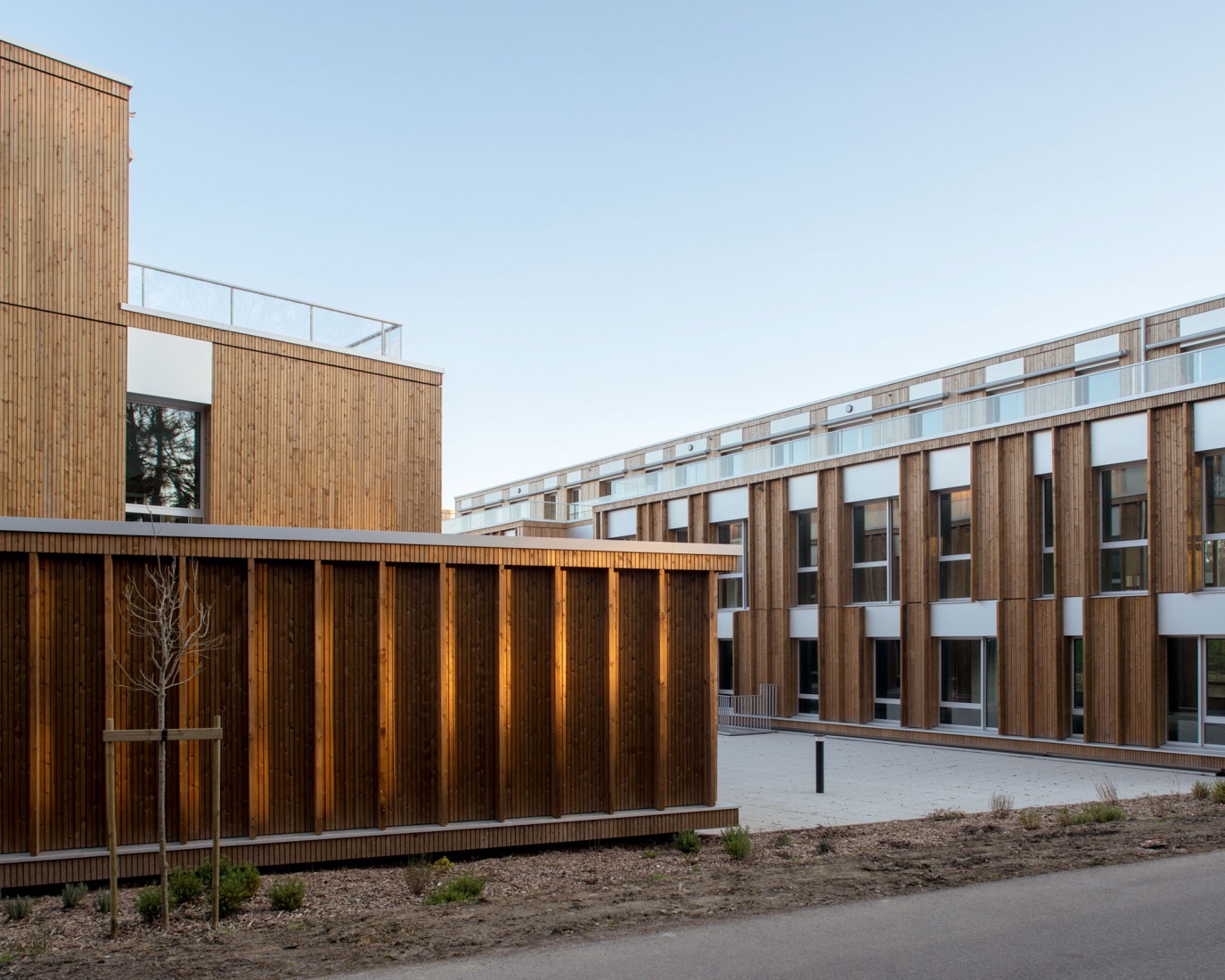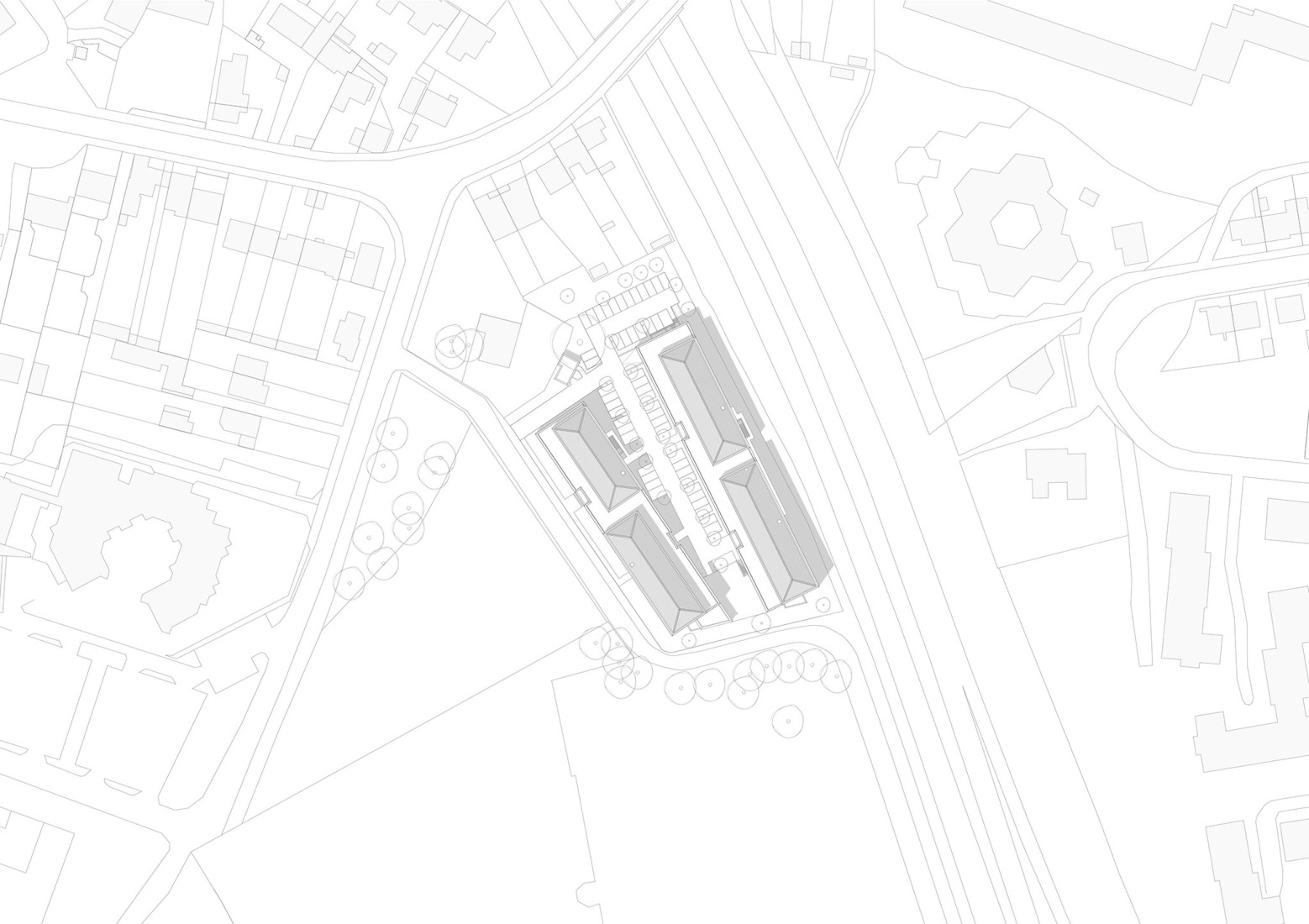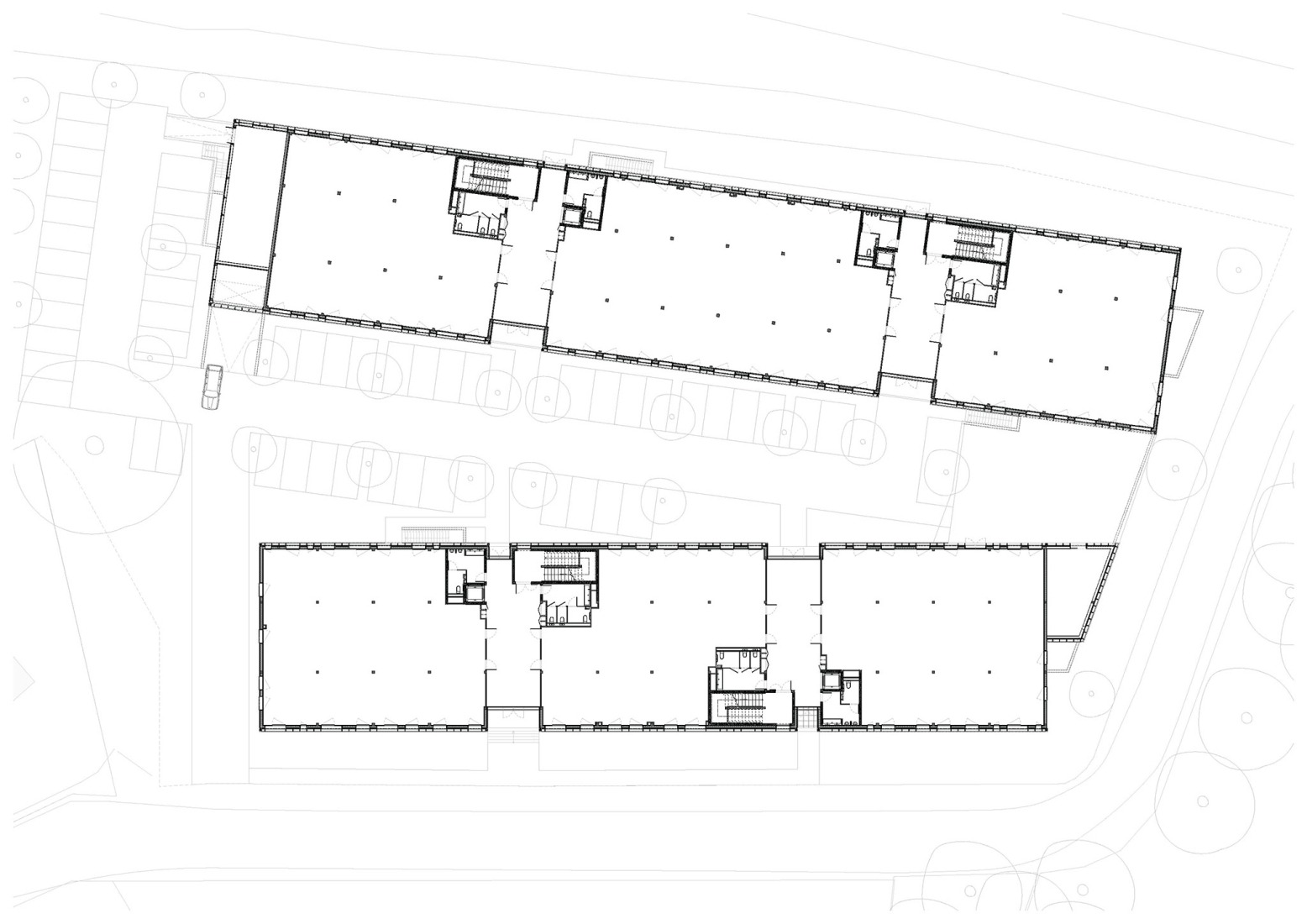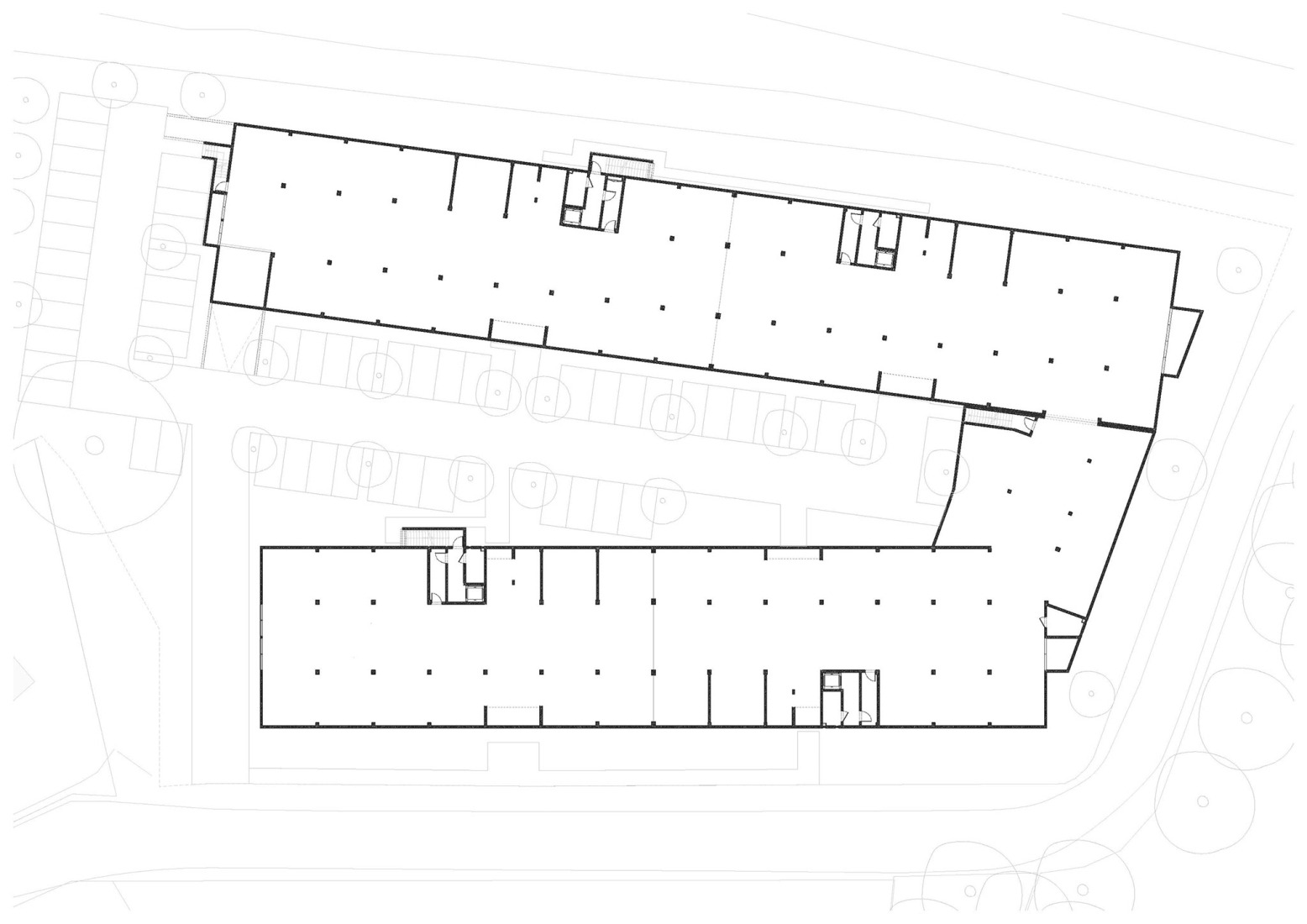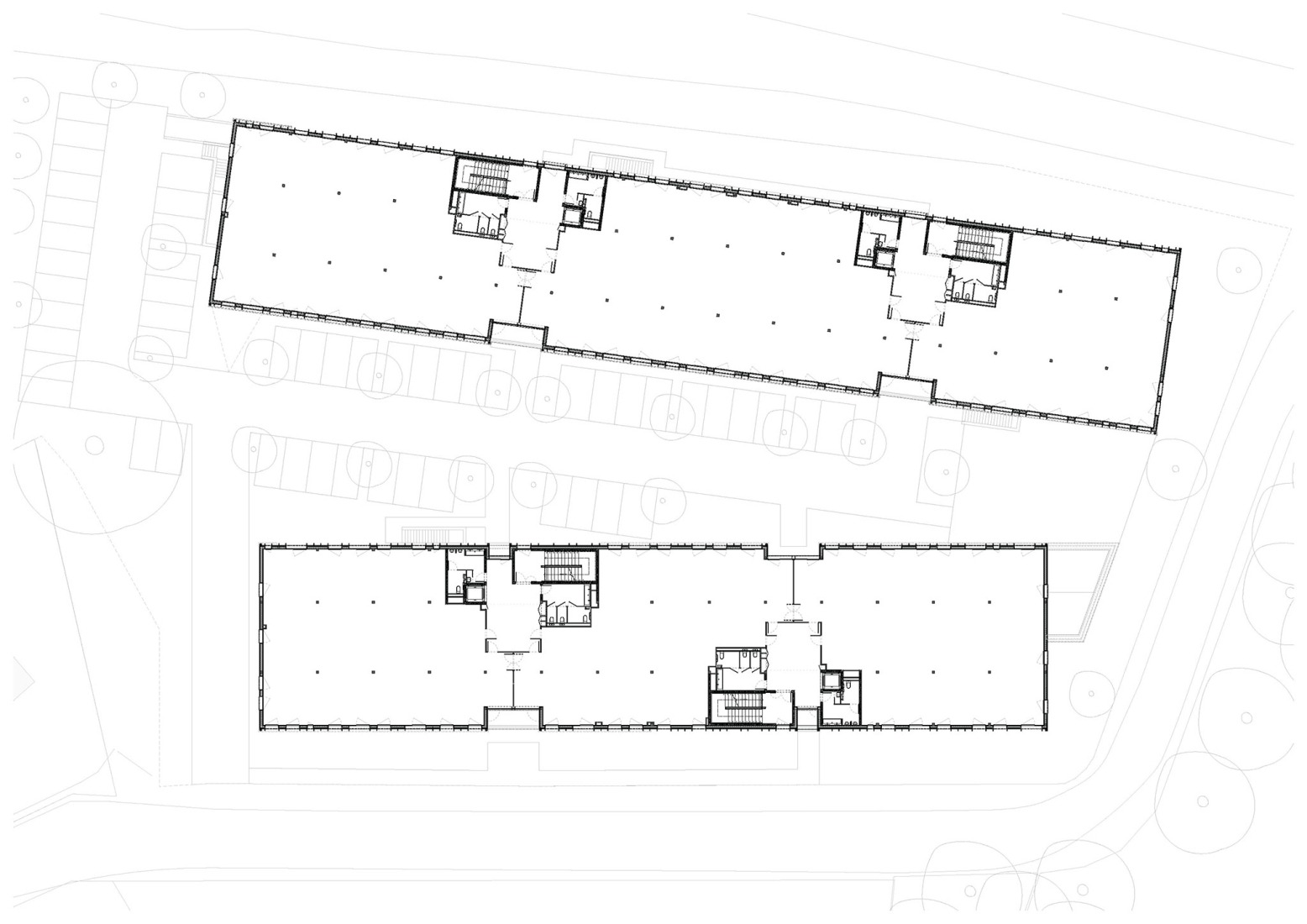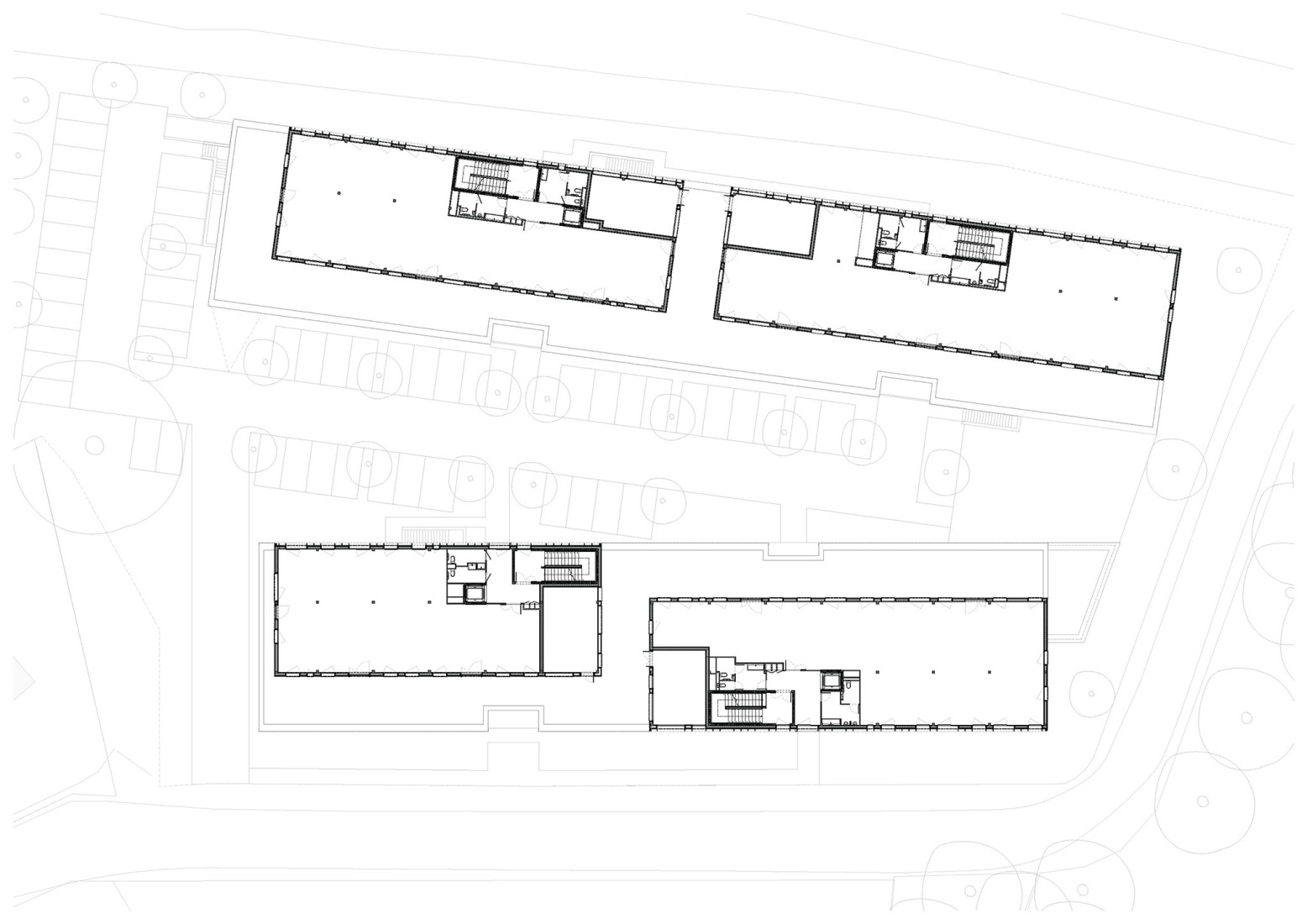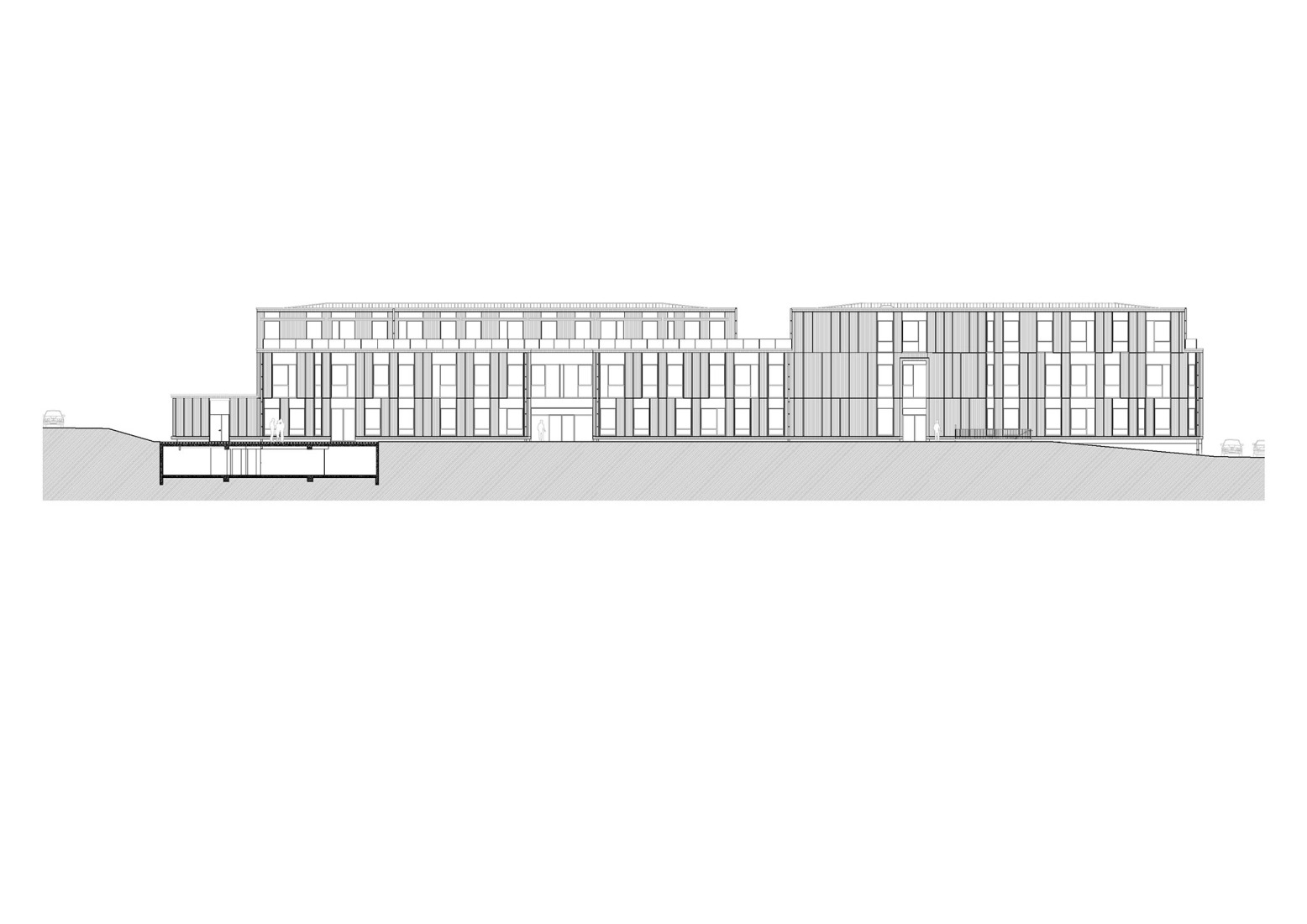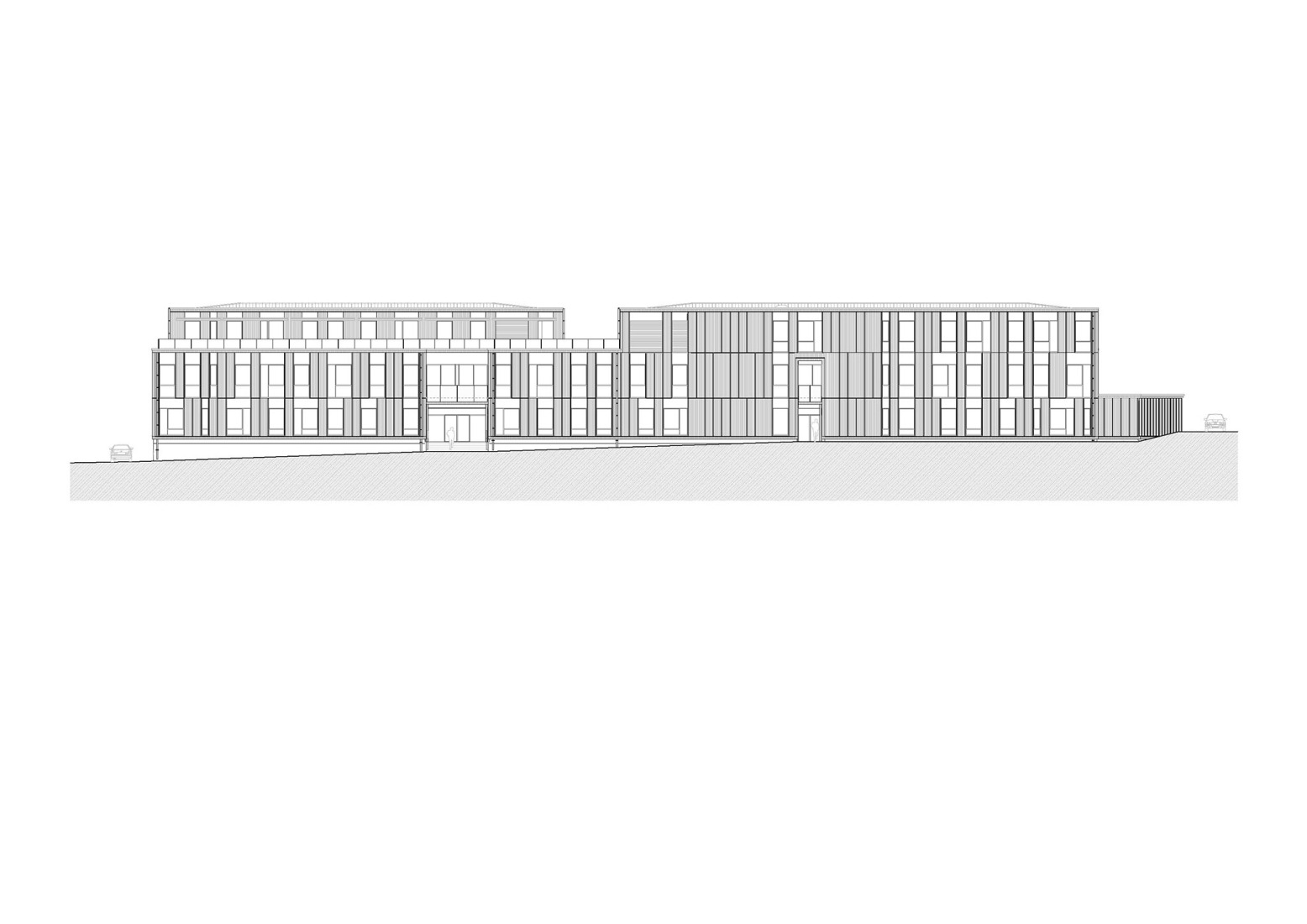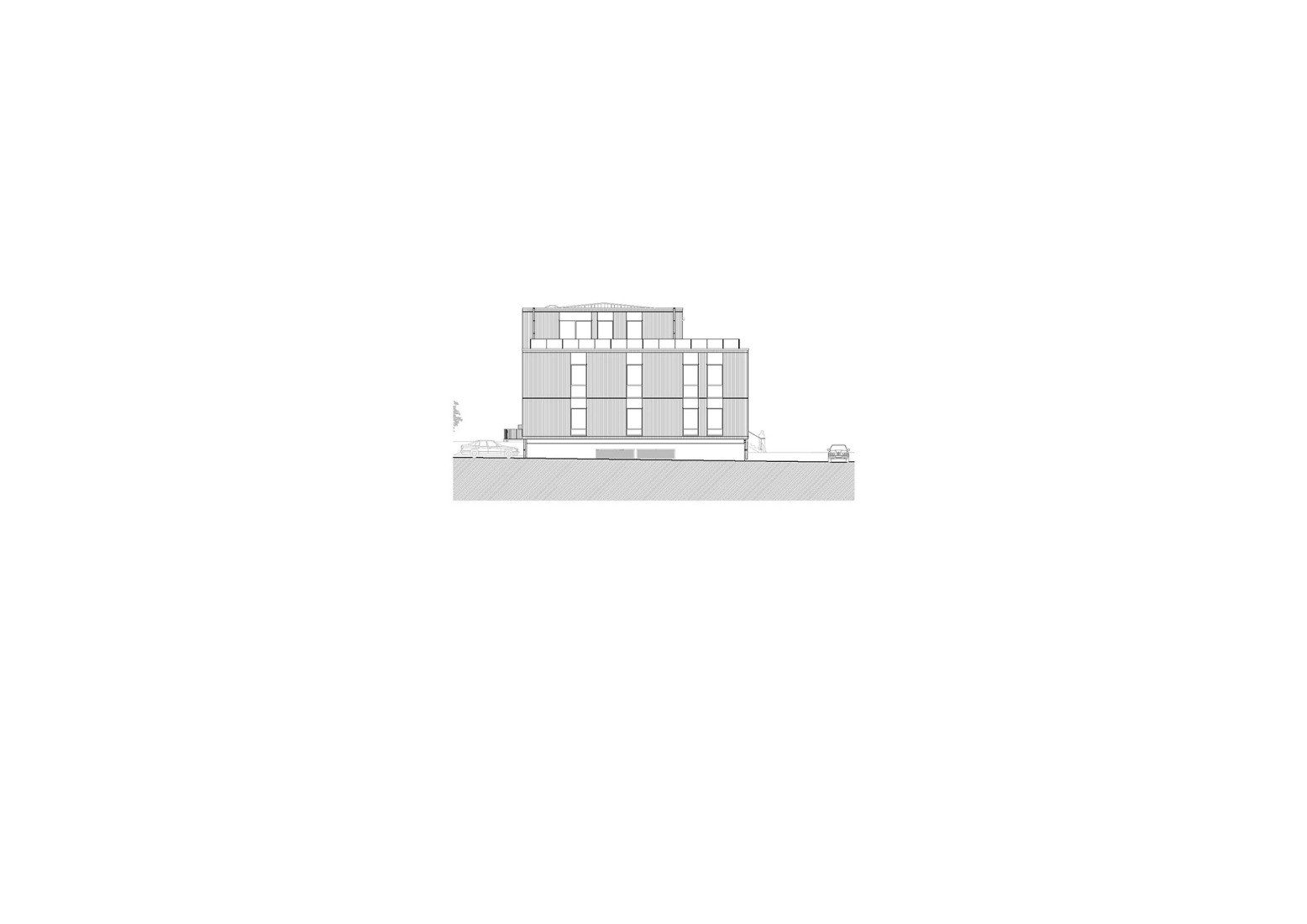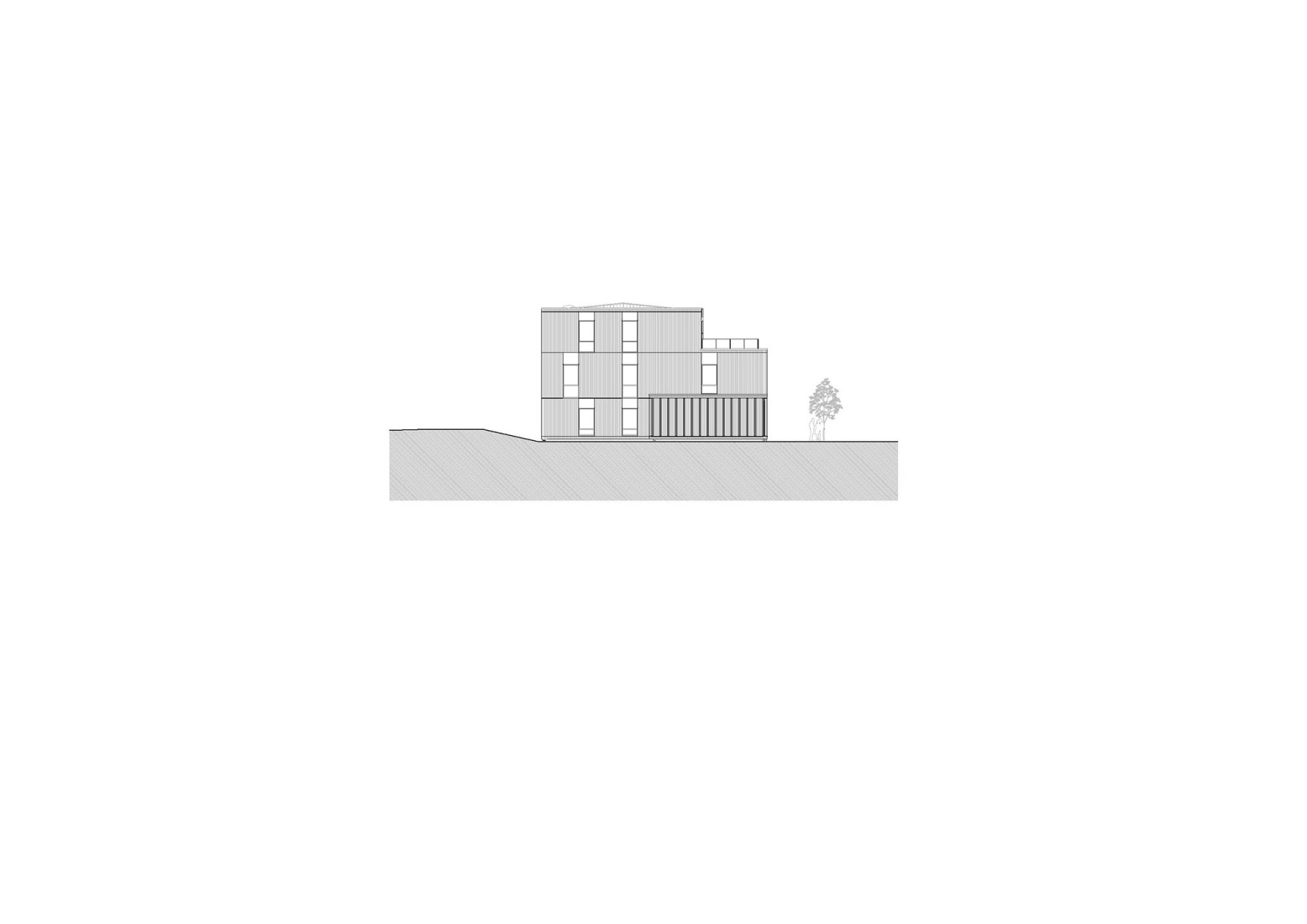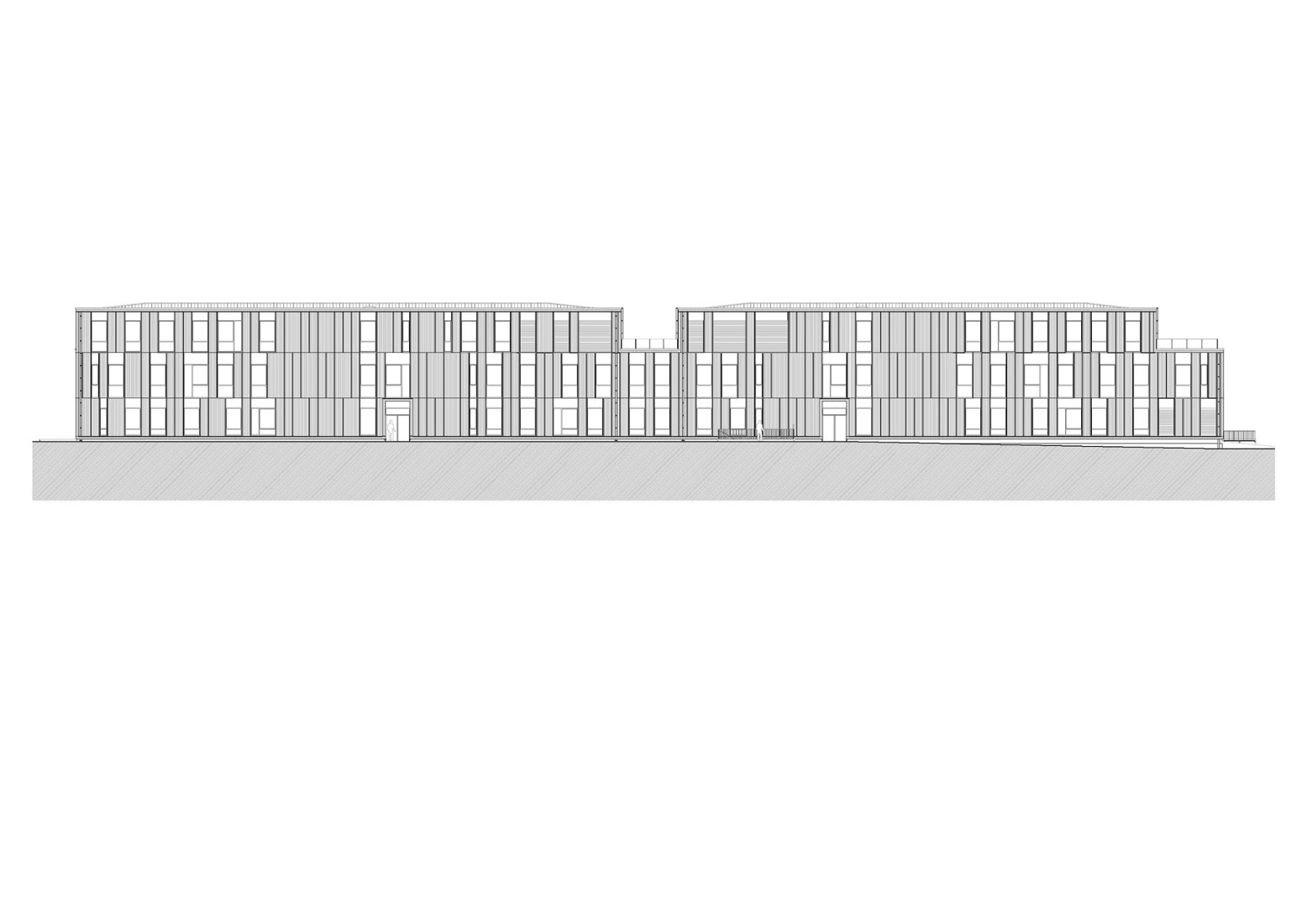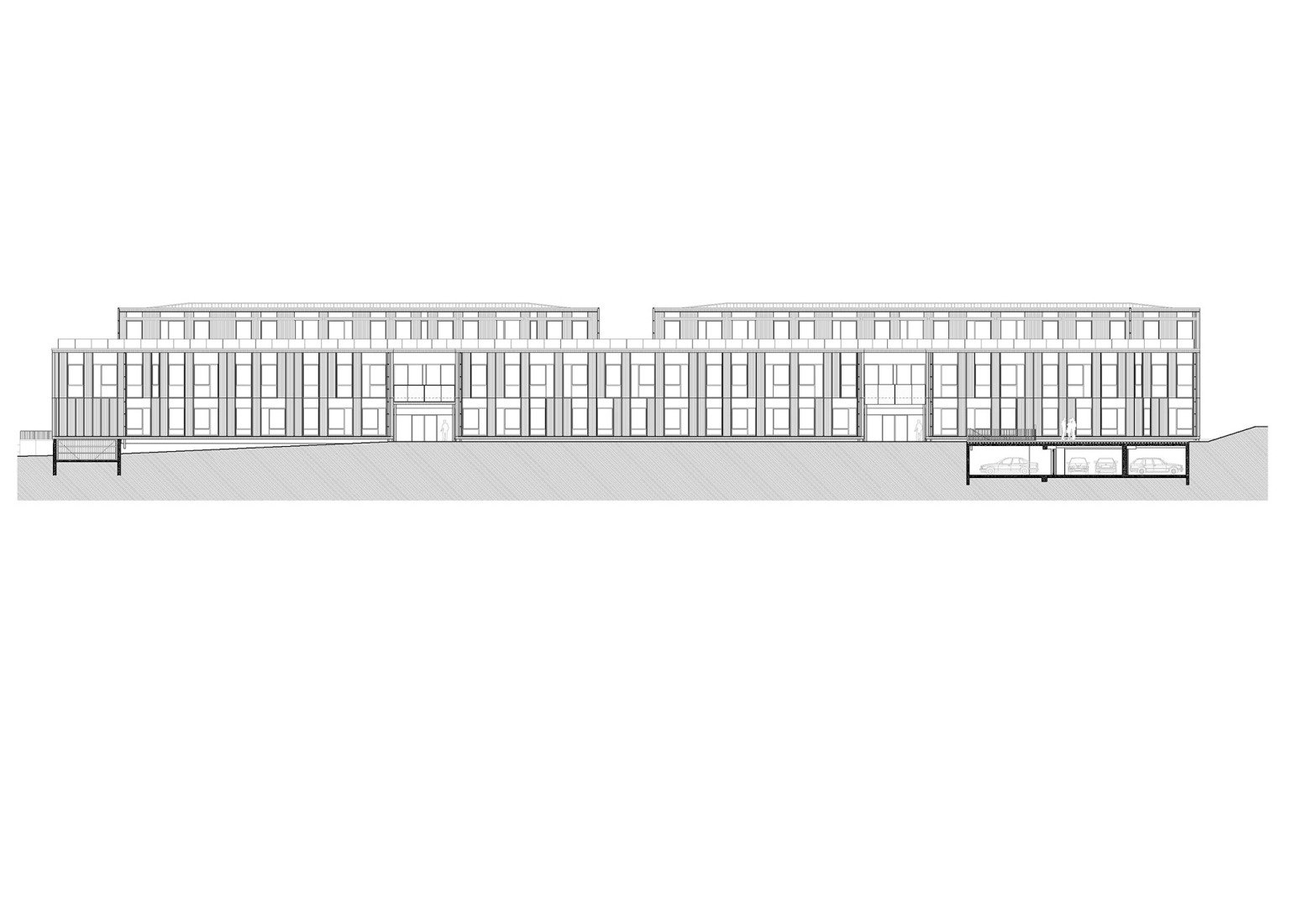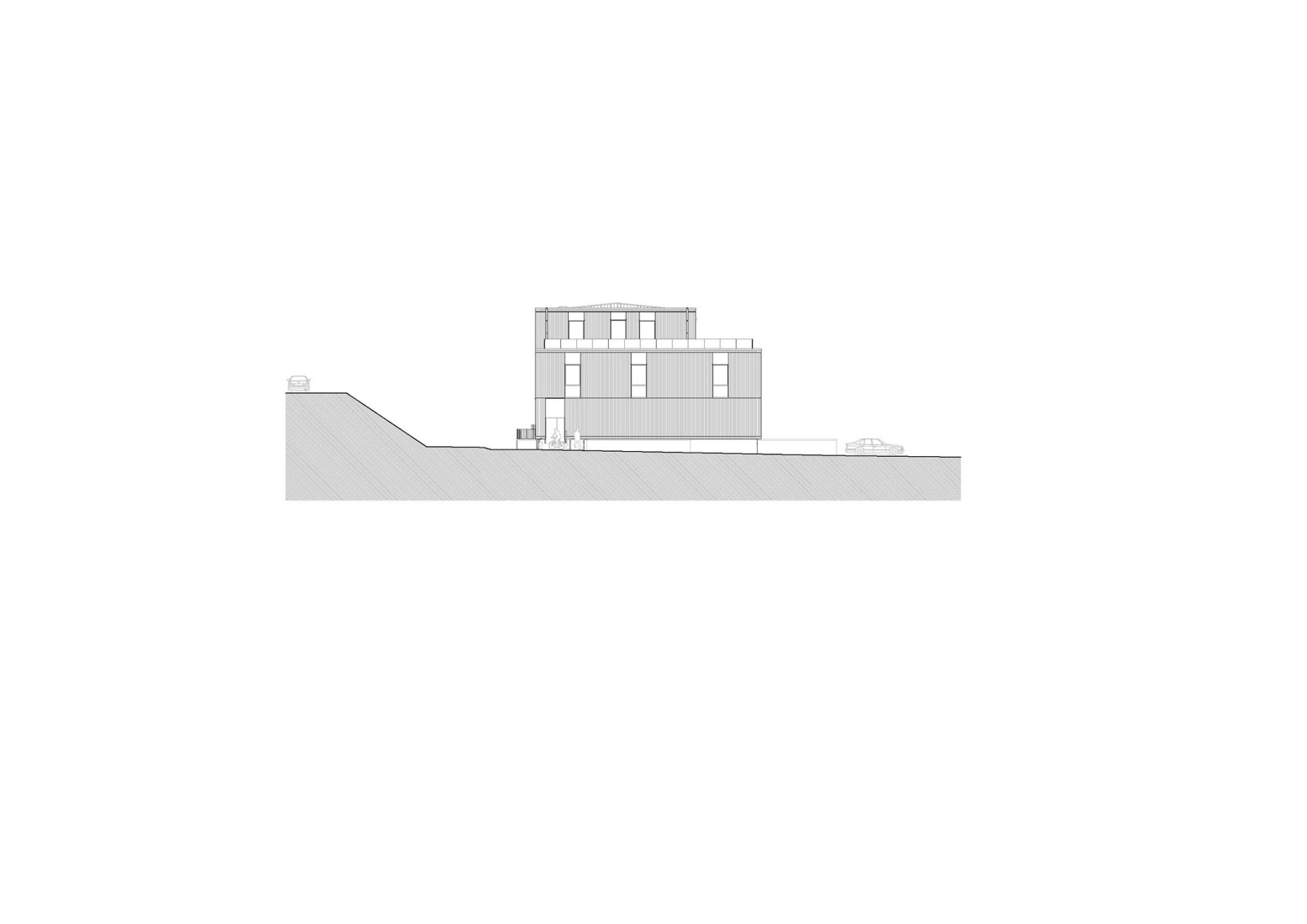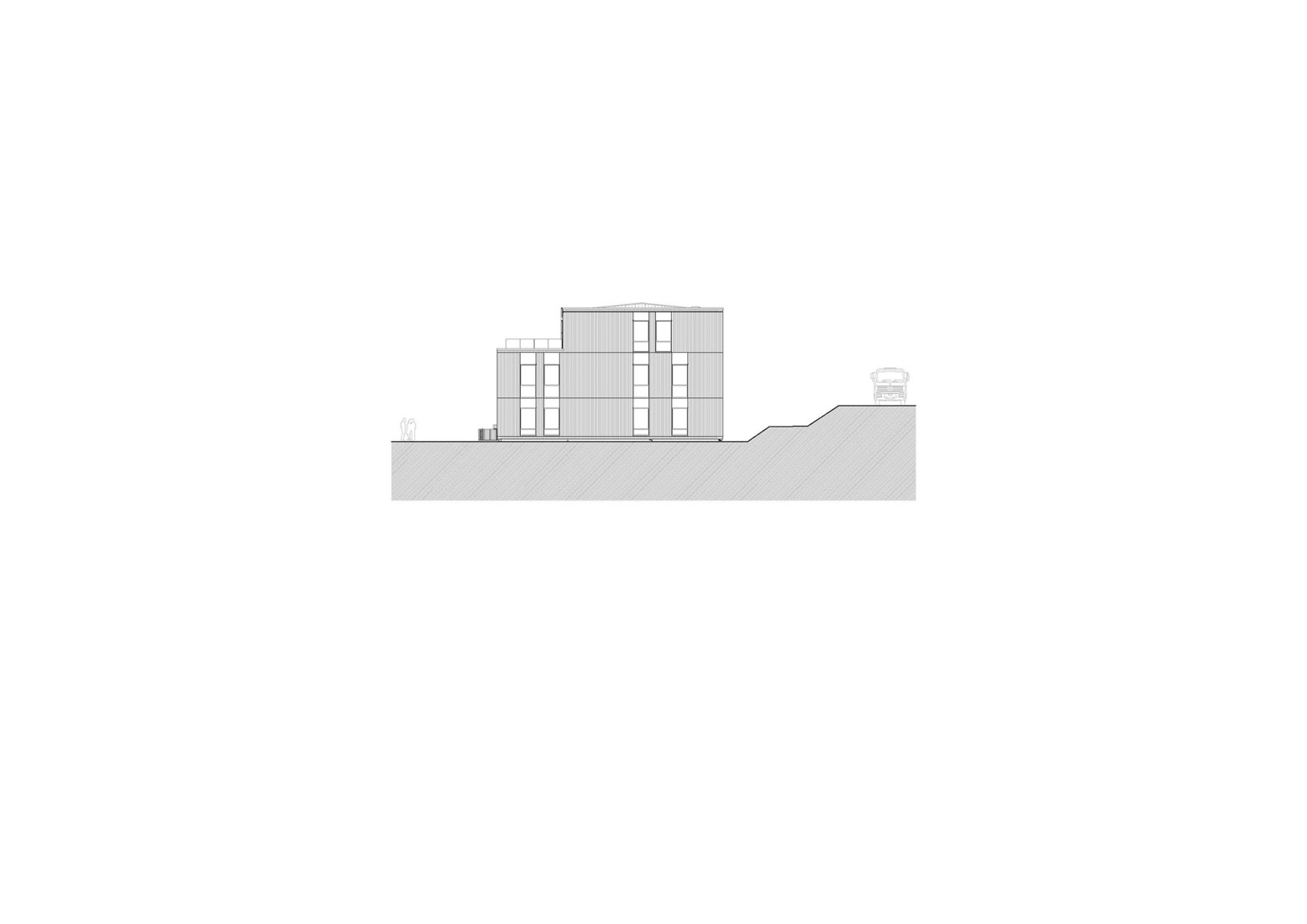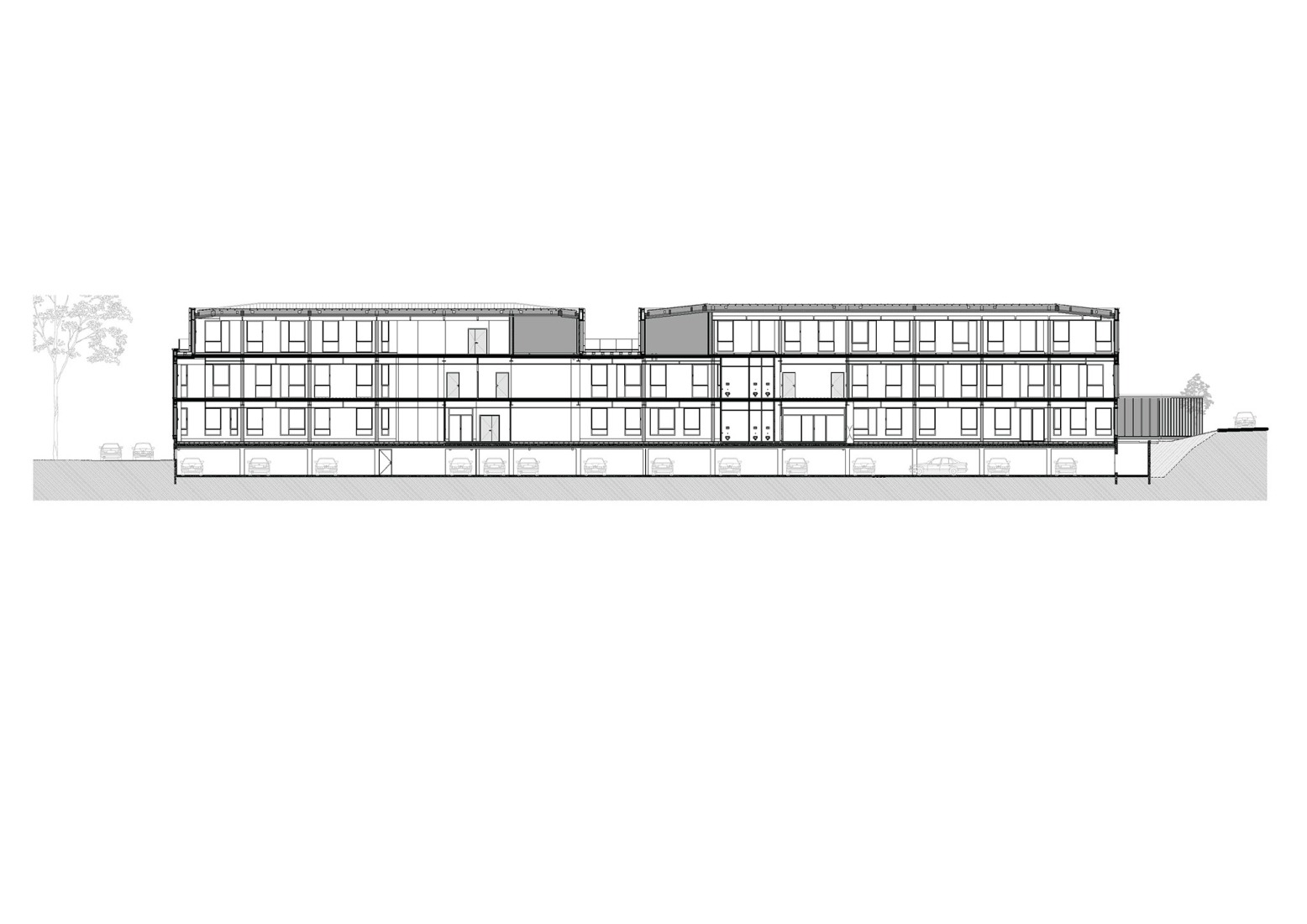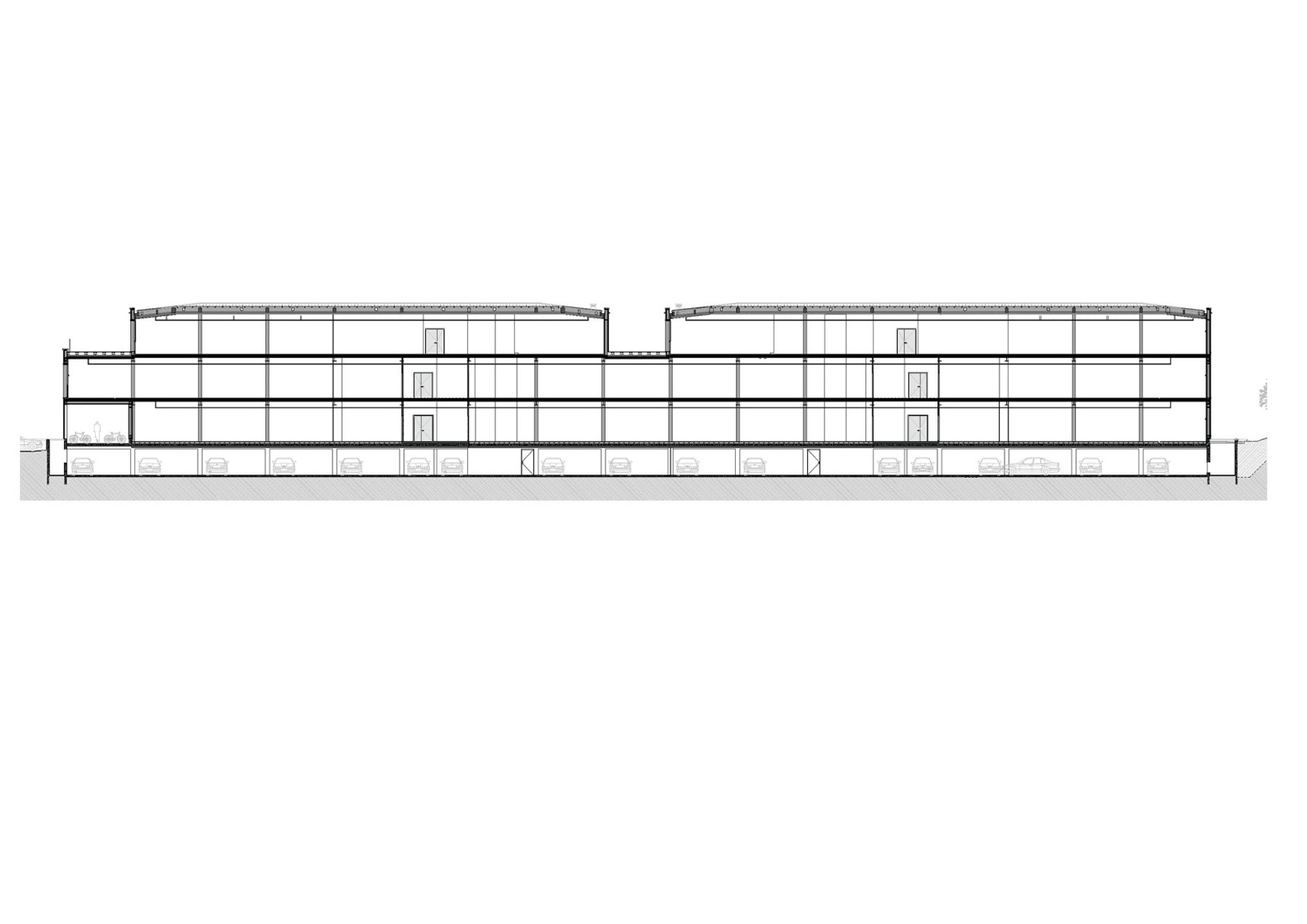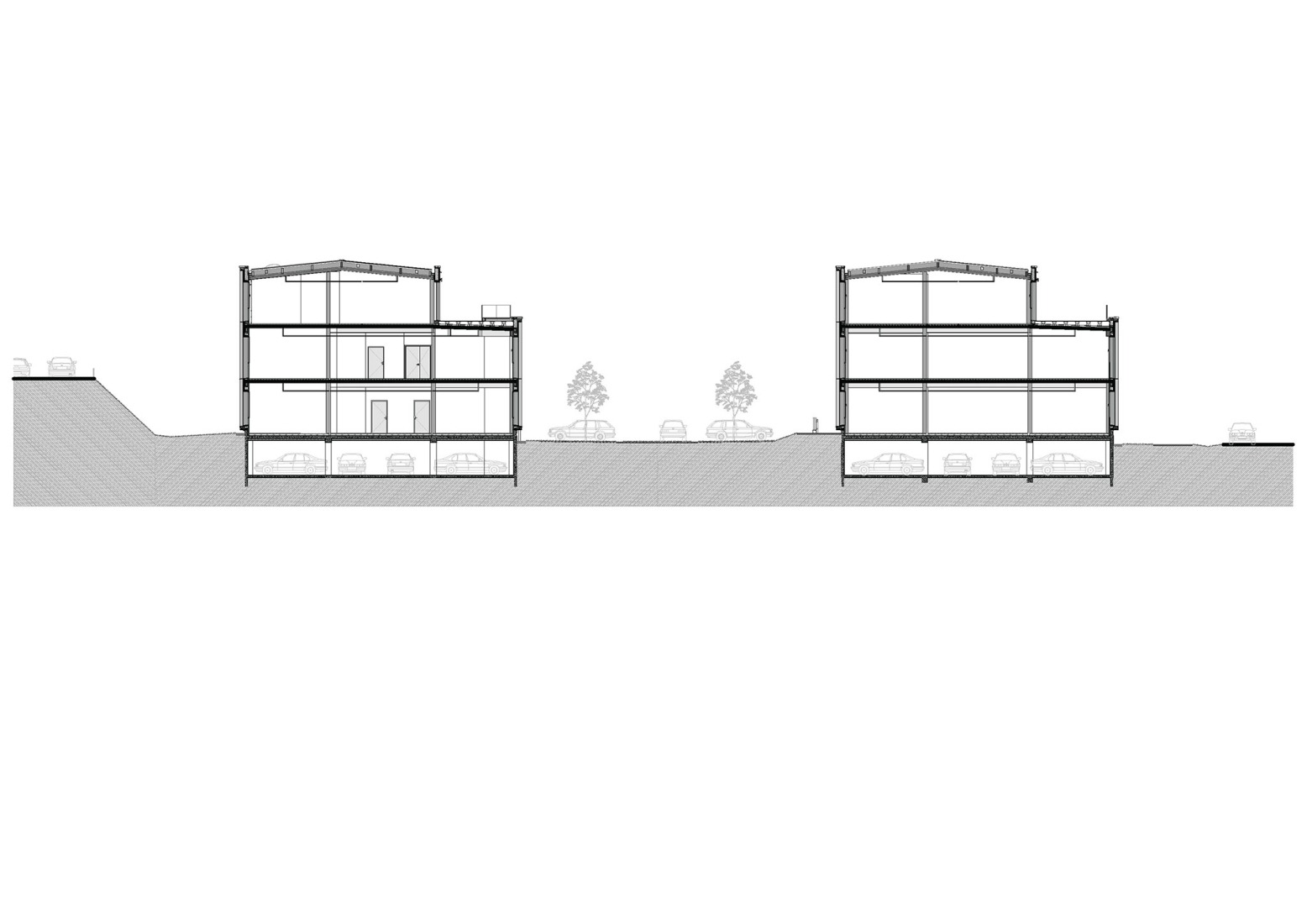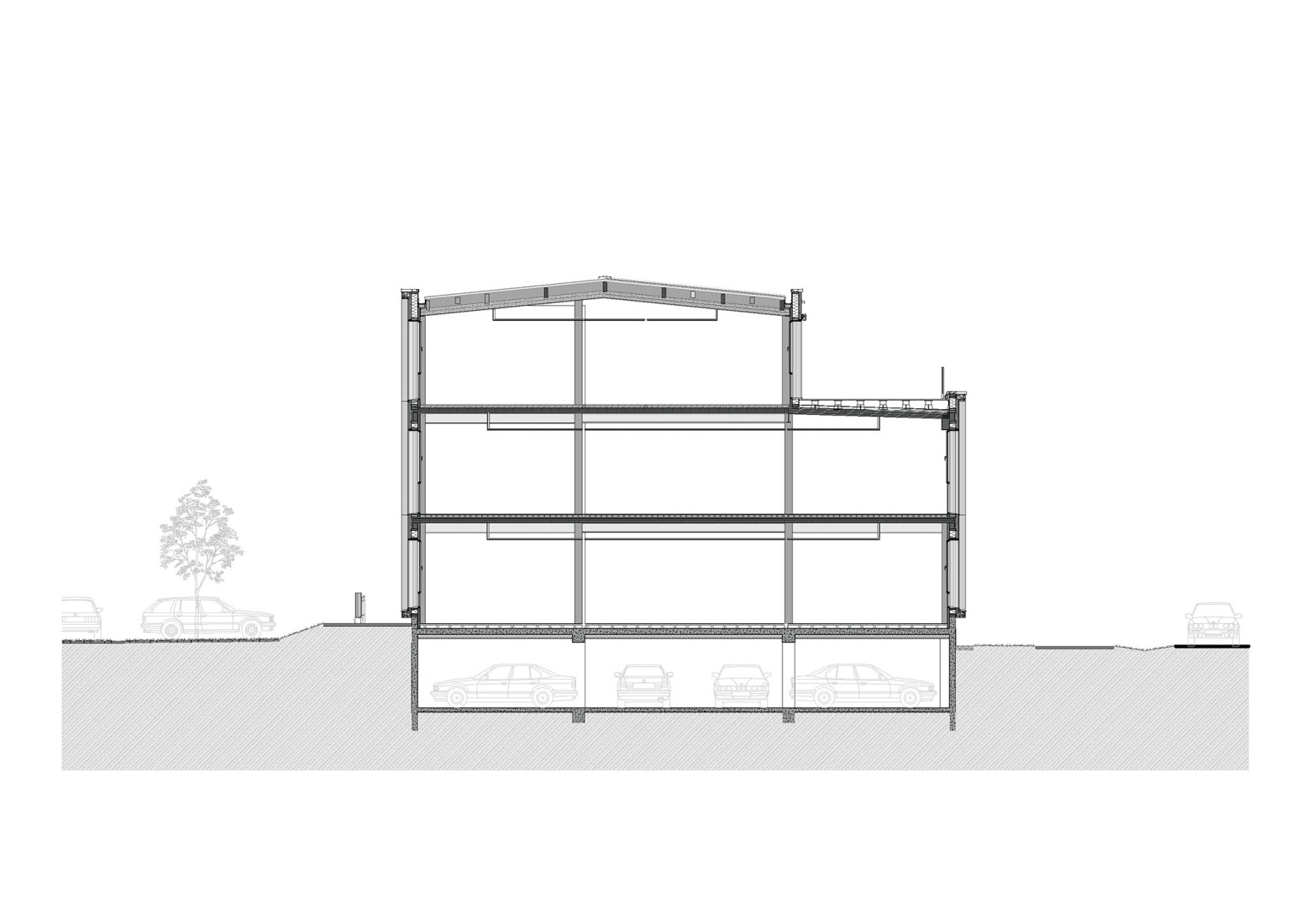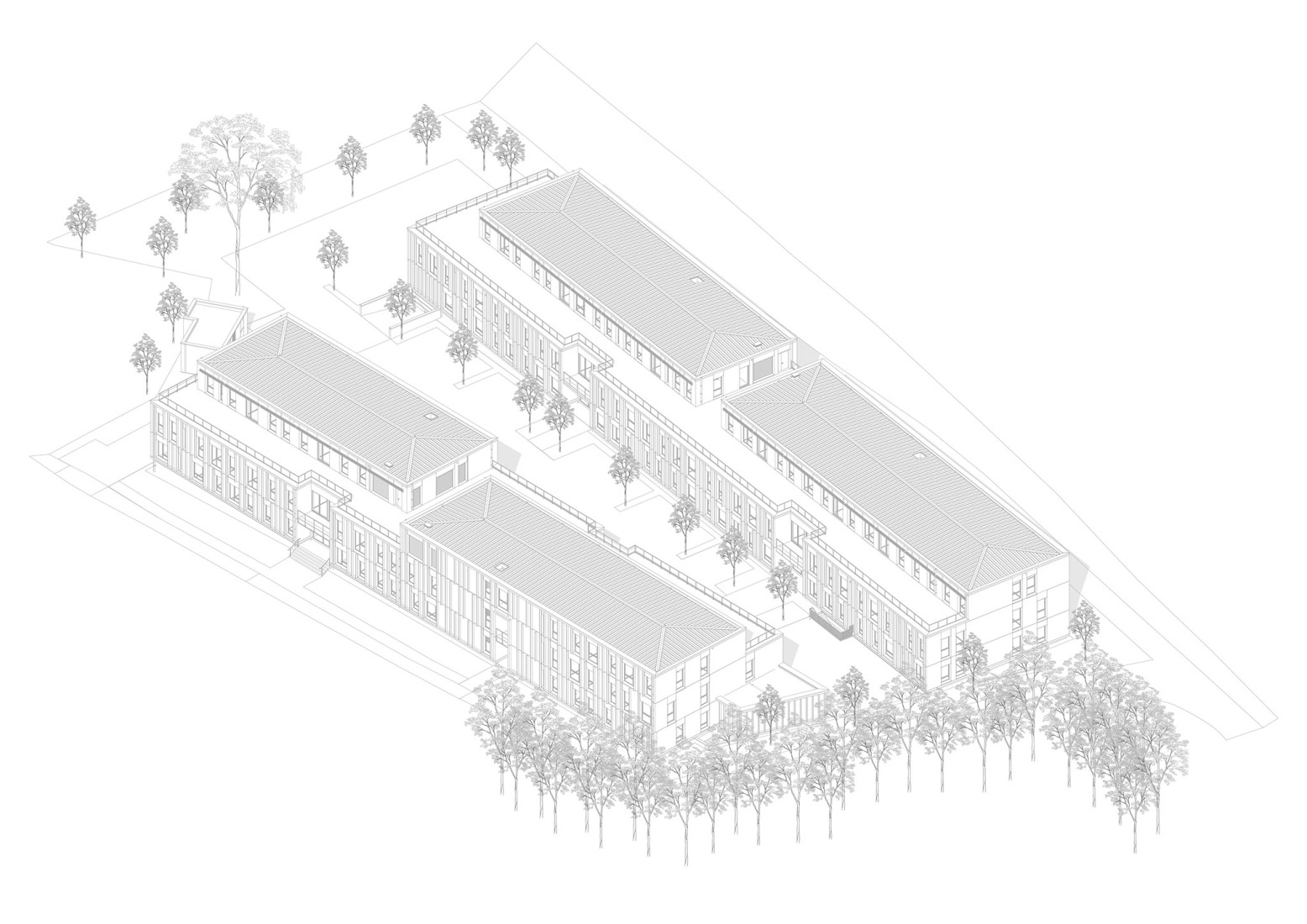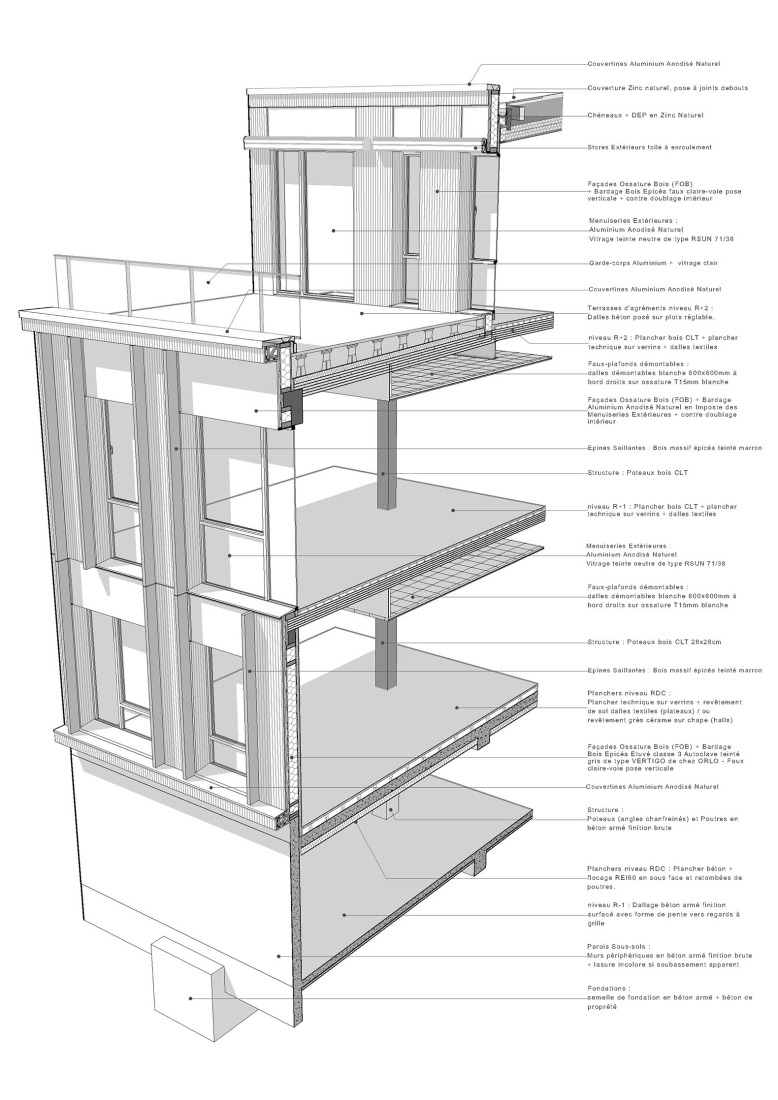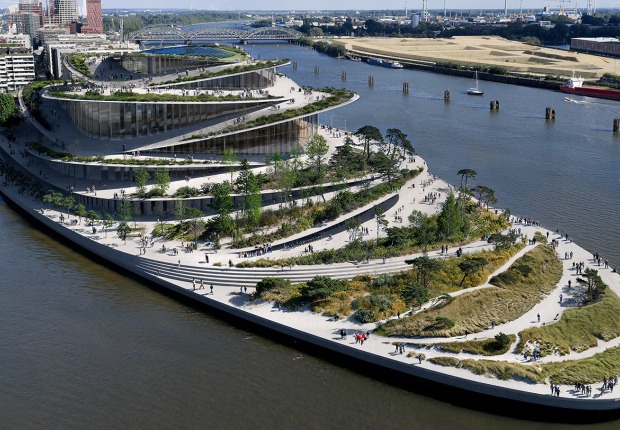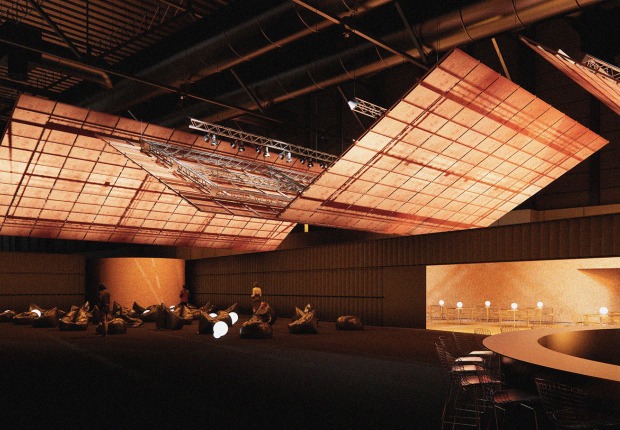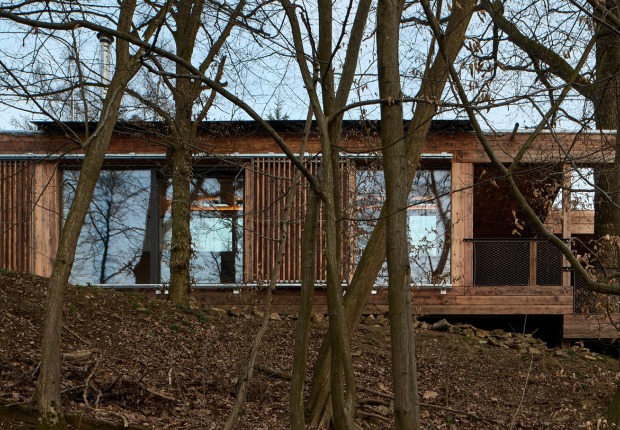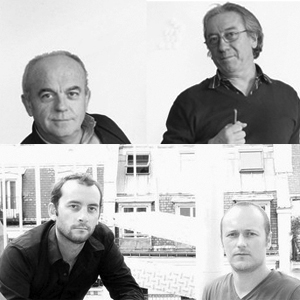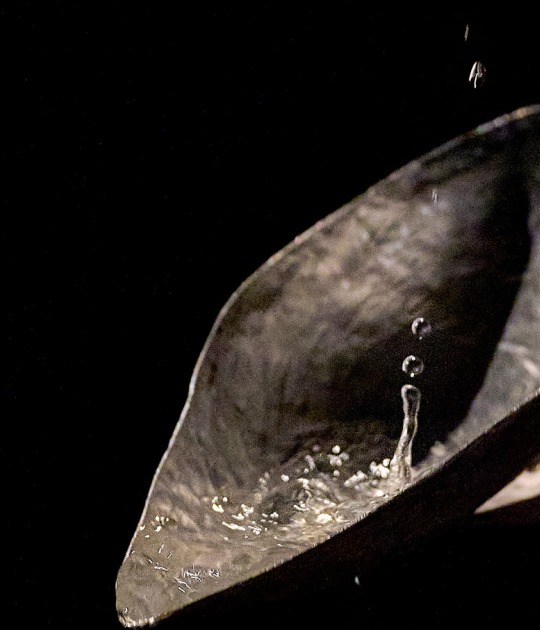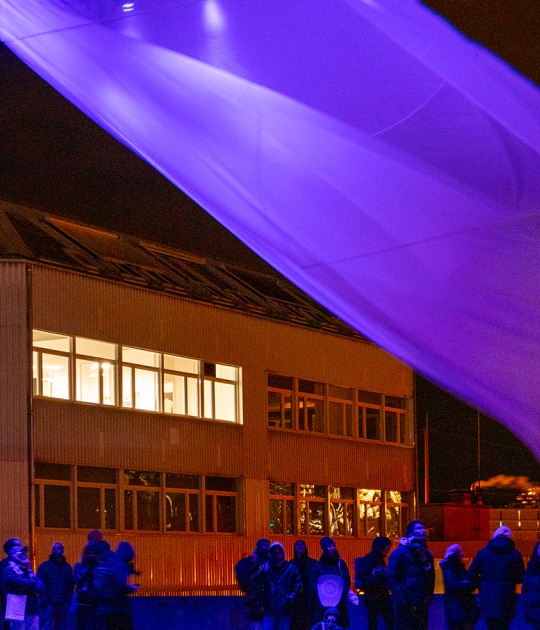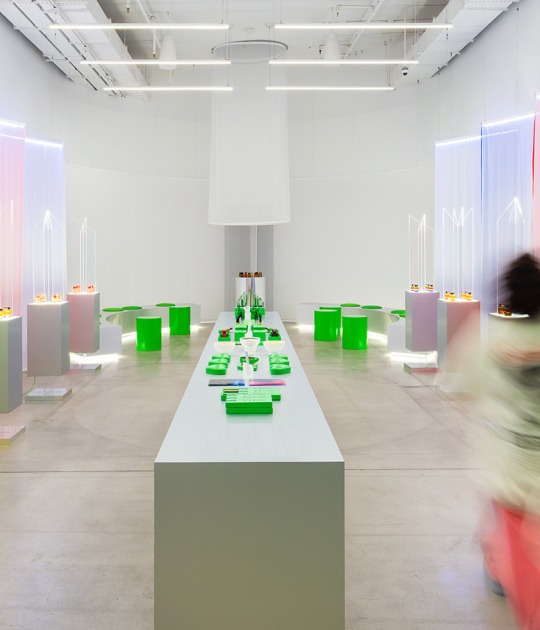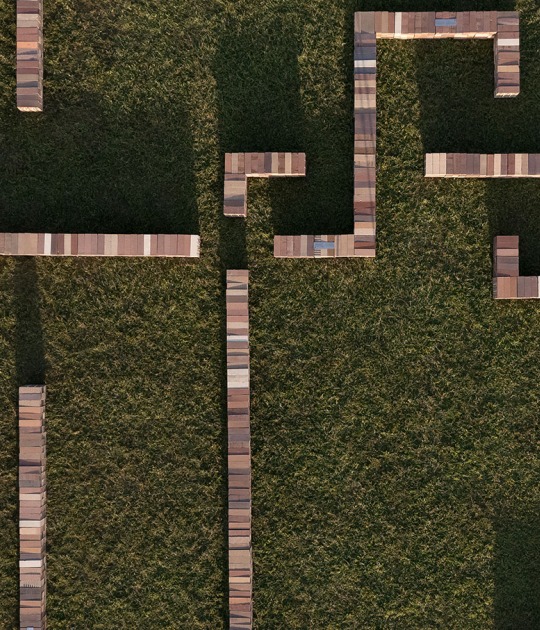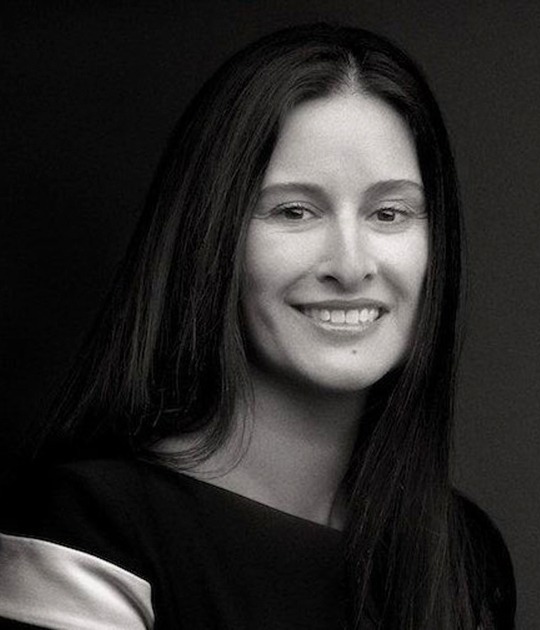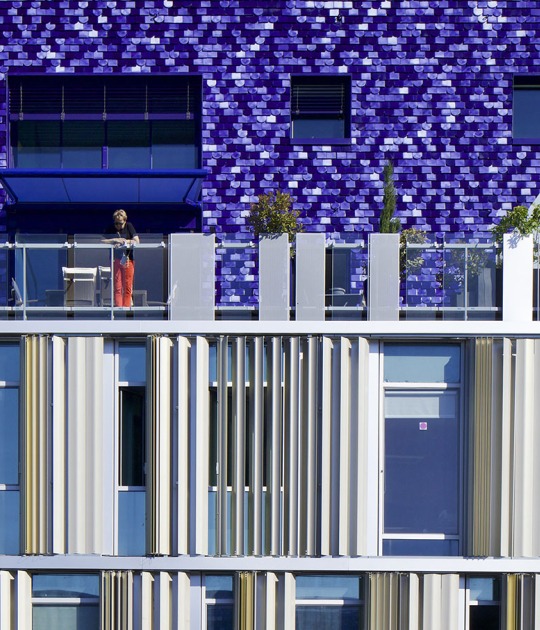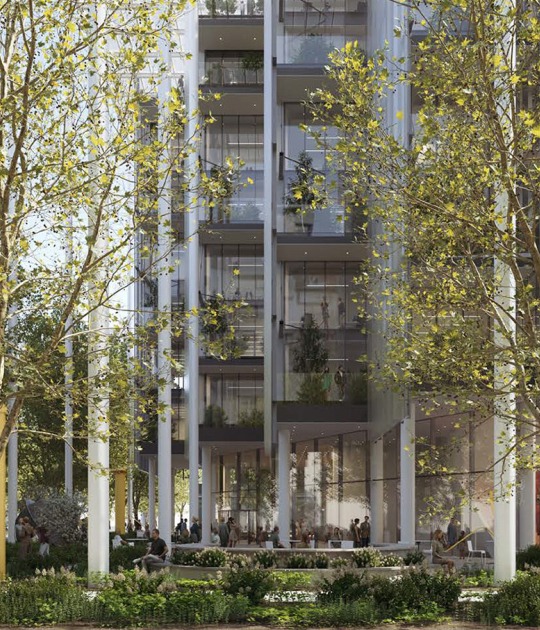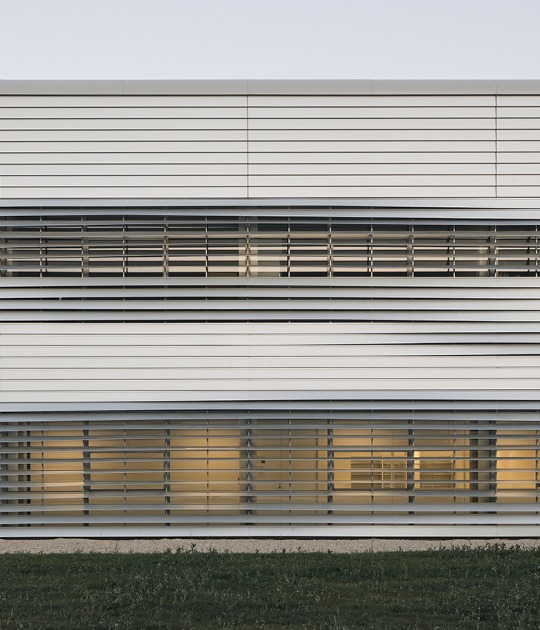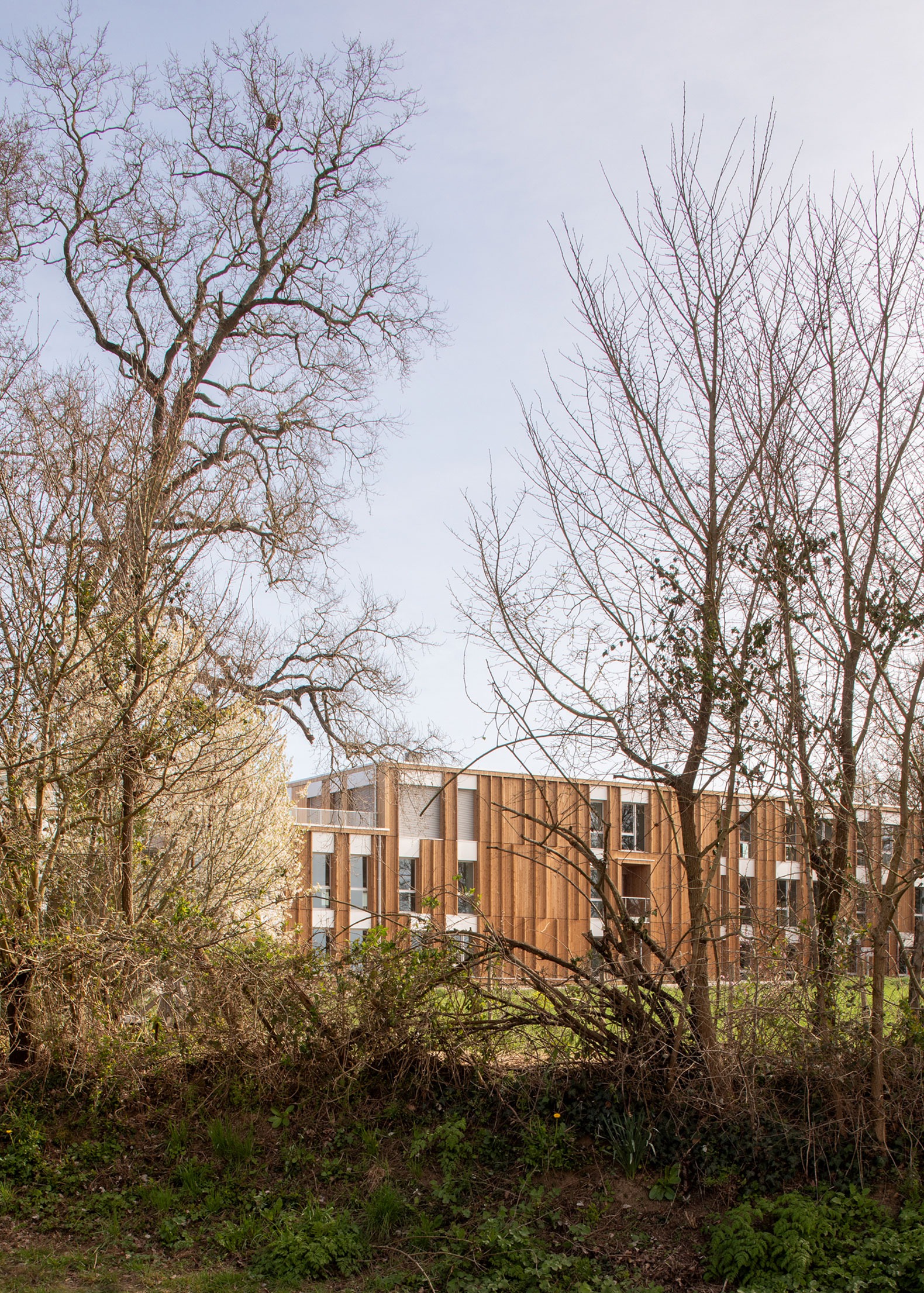
Alta Architectes organized the project with the idea of two blocks. The buildings grow from an underground base that houses a parking lot with charging stations and bicycle parking.
Rigorous care has been taken in selecting environmentally friendly materials and production sites. Thus, most of the wood comes from sustainable forests, and concrete is used selectively, only where truly necessary, i.e., in vertical circulation or the foundation.
The fir wood frame façade gives the building texture and personality and, together with the steel structure, facilitates the creation of spacious and bright spaces, suitable for landscape offices. Other materials, such as anodized aluminum for the finishes, zinc for the roofs—which provides excellent watertightness—and porcelain stoneware for the flooring, have been carefully chosen to complement the building.
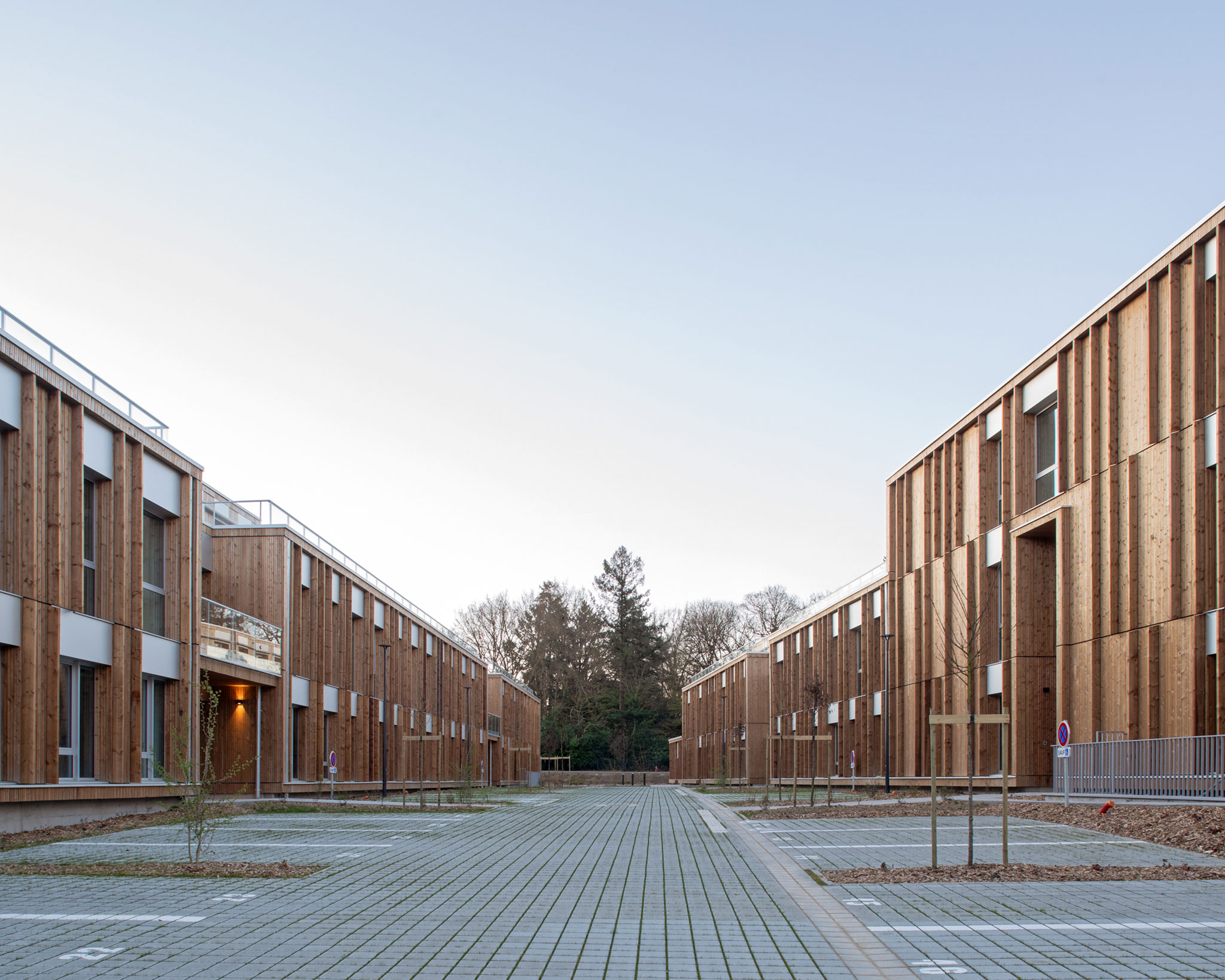
"Bois Harel" by Alta Architectes. Photograph by Gaëtan Chevrier.
Project description by Alta Architectes
Alta unveils an ambitious office project located on the Chemin du Bois Harel, a site transforming on the edge between Rennes and Saint-Jacques-de-la-Lande. Once a market gardening area marked by the Crublé greenhouses, closed in 2004, this reconfigured territory lies between countryside and urban periphery.
To the west, a rural landscape dotted with scattered housing; to the east, the Rennes ring road with its constant flow of traffic. At the intersection of these two contrasting realities, the site provides fertile ground for a new vision of urbanity. Alta envisions here a connecting architecture—simple and contemporary—designed to bridge the scale of daily life with that of the broader landscape, while preserving quality of life.

Two low-carbon buildings
The project is organized around two three-storey buildings, set atop a shared underground base that houses parking. Designed to meet French 5th category ERP standards, the project includes 170 parking spaces, several of which are equipped with electric vehicle charging stations, along with secure bicycle storage facilities to promote soft mobility.
The construction follows an environmentally responsible approach, driven by committed technical choices. The structure is composed of 80% timber sourced from sustainably managed forests, certified PEFC and FSC. Concrete is used selectively and only where strictly necessary—for foundations, vertical circulation, and overall structural stability.

The façades are made of timber frame walls, the floors of cross-laminated timber (CLT), while steel beams optimize ceiling heights, offering spacious, light-filled interiors with 2.70-meter ceilings.
This construction approach ensures a healthy, comfortable, and efficient working environment. Timber, naturally insulating and moisture-regulating, supports excellent indoor air quality and delivers high levels of energy and acoustic performance.
A material palette that is subtle, expressive, and sustainable
The design is grounded in durable materials, carefully selected for their appropriateness and their ability to engage with the surrounding landscape. Spruce, used for façades, cladding, and vertical elements, adds a warm and lively texture. Natural anodized aluminum provides an elegant, understated finish for windows, railings, and technical components. Natural zinc, used for roofing and rainwater downpipes, completes the palette with subtlety. At ground level, porcelain stoneware and permeable concrete encourage water infiltration while ensuring material continuity.
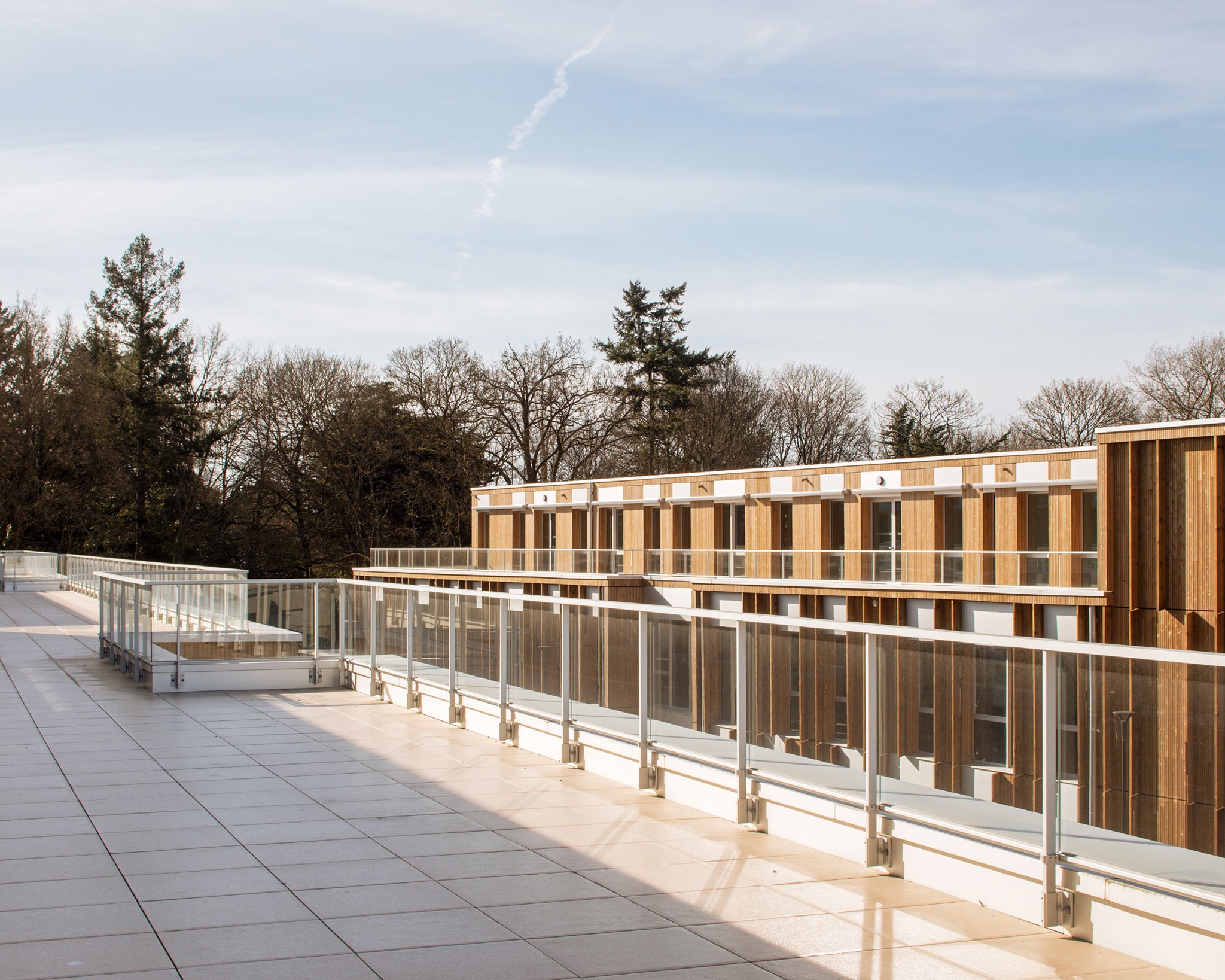
Technical equipment is integrated into the roof and discreetly concealed, preserving the purity of the overall silhouette. The architecture is expressed with sensitivity, integrating seamlessly and thoughtfully into its context.
Alta proposes a new way of thinking about office architecture. Far from stereotypes, the architecture steps back to support the dynamics of the site, reconnect with the landscape, and meet contemporary demands for comfort, sustainability, and usability. A committed, restrained, and human vision of urban development—resolutely forward-looking.
